What to do in Samarkand, Uzbekistan? Samarkand is a mythical city with a long history, stunning architecture, delicious food and colourful handicrafts. Here are our top tips for things to see and do in Samarkand and the surrounding area.
Table of contents
Samarkand in Uzbekistan
Samarkand is one of the oldest surviving cities in Central Asia. Its history has been dramatic at times, having been captured by Arabs and Persians, and destroyed by the Mongols under Genghis Khan. In the 14th century, Samarkand was the capital of Timur Lenk's vast and powerful empire.
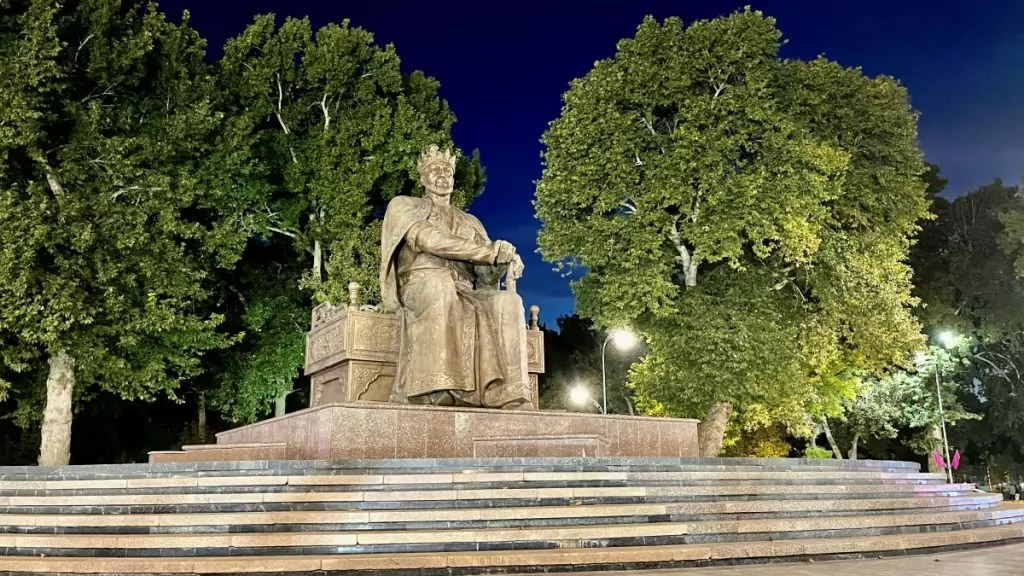
Samarkand is a legendary city mentioned in the introduction to the collection of fairy tales. One thousand and one nights, and in several songs is sung about as the place of dreams. Samarkand is also known as a stop along the famous Silk Road, one of the oldest of the world's major trade routes.
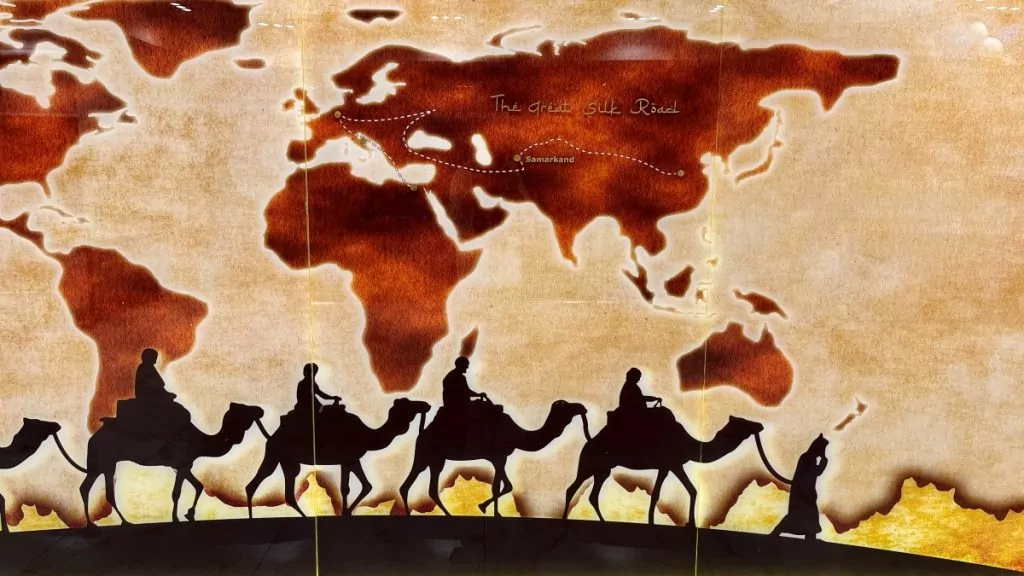
Today, Samarkand is the second largest city in Uzbekistan and attracts many tourists due to its monumental religious buildings, many of which are part of the UNESCO heritage site 'Samarkand - Crossroads of Cultures'. Above all, tourists come from neighbouring countries, as well as from Russia, Turkey, South Korea, Germany, France, India and the USA. We had the opportunity to make a press trip here recently, and it was truly a dream come true.
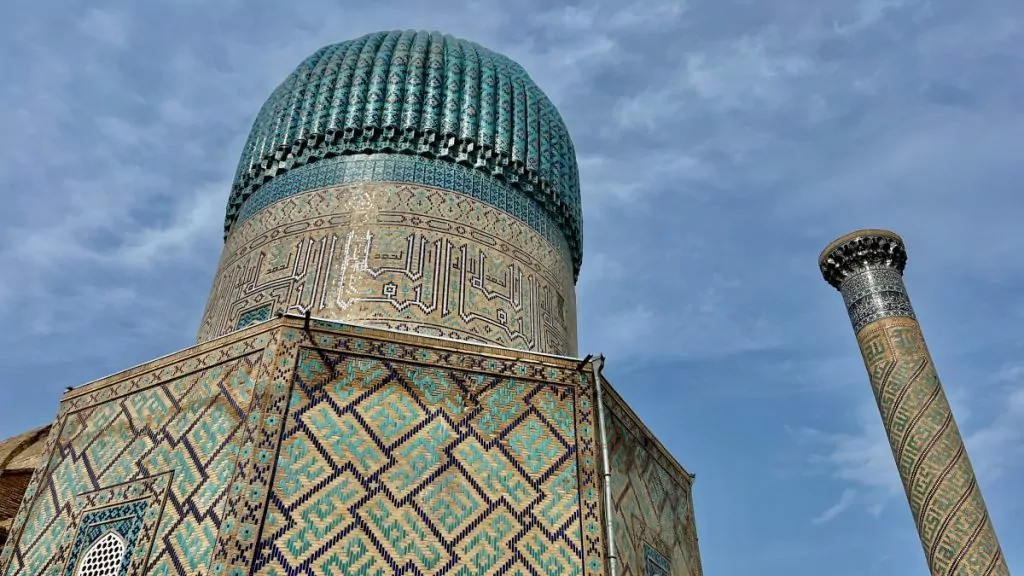
Samarkand is located in Uzbekistan, about 330 kilometres southwest of the capital Tashkent.
What to do in Samarkand, Uzbekistan?
What to see and do in Samarkand? This city offers plenty of historical attractions, but also traditions, crafts and local food. We've put together our top tips for the city and its surroundings.
1. admire the Registan square
Registan is a historic square found in the centre of Samarkand. The square is surrounded by three beautiful madrassas, which are historic former schools or institutions of Islamic education. The square, along with several other buildings in Samarkand, is a UNESCO World Heritage Site and one of the city's most important attractions. During the day you can visit the various courtyards and there is also a museum.
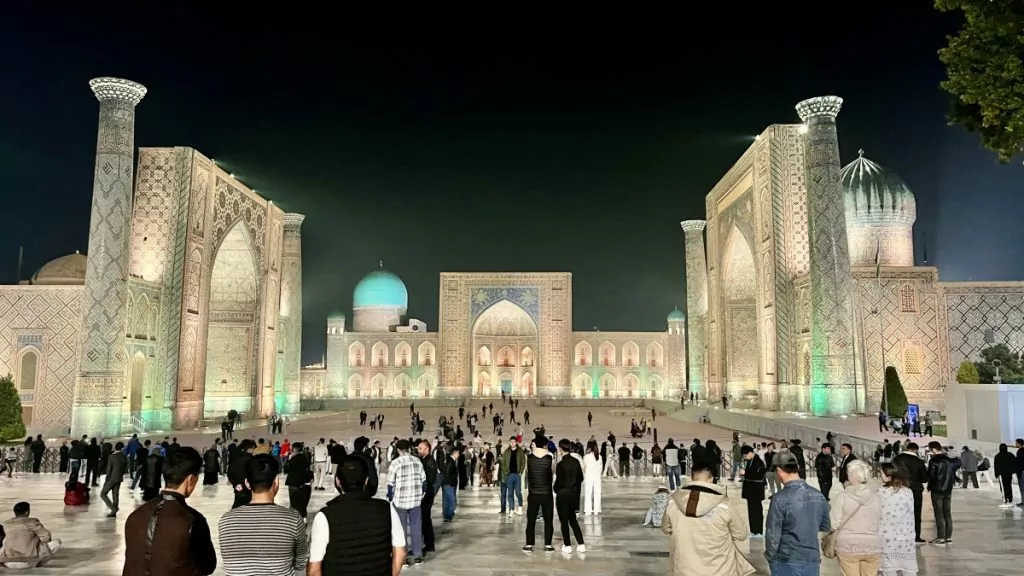
2. See the evening show at the Registan.
Registan Square is worth visiting both during the day and in the evening. In the evening, although you'll have to settle for standing outside the gates, you can enjoy the spectacular light show, accompanied by an American narrator. The show is performed every evening during the tourist season, i.e. during the summer months.
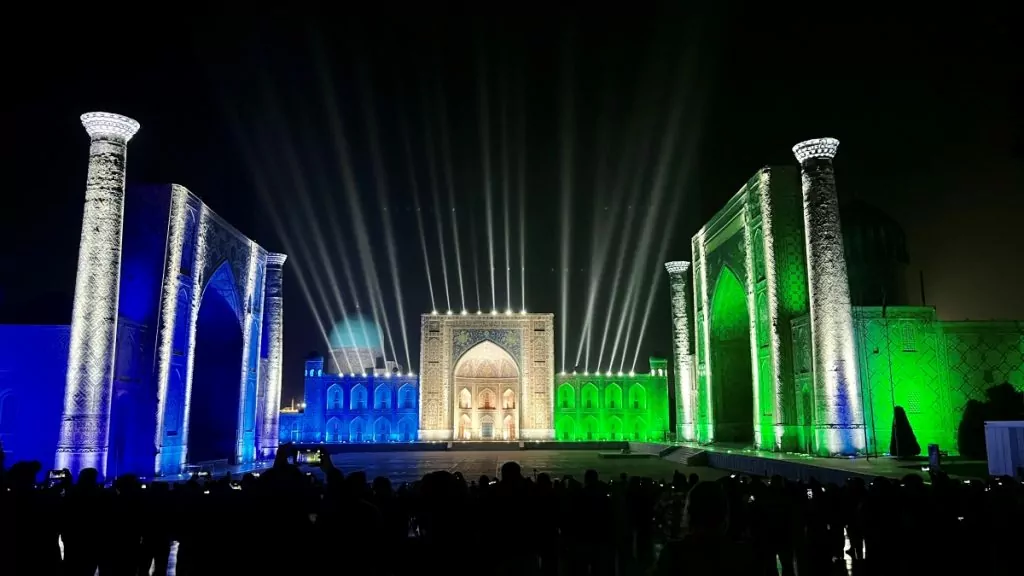
3. Discover the Mausoleum of Timur Lenk
Born in 1336 in what is now Uzbekistan, Timur Lenk was a successful and highly brutal Turkic-Mongolian warlord. During his time in power, he expanded Timurid territory from present-day Turkey to India in an attempt to recreate Genghis Khan's former empire.
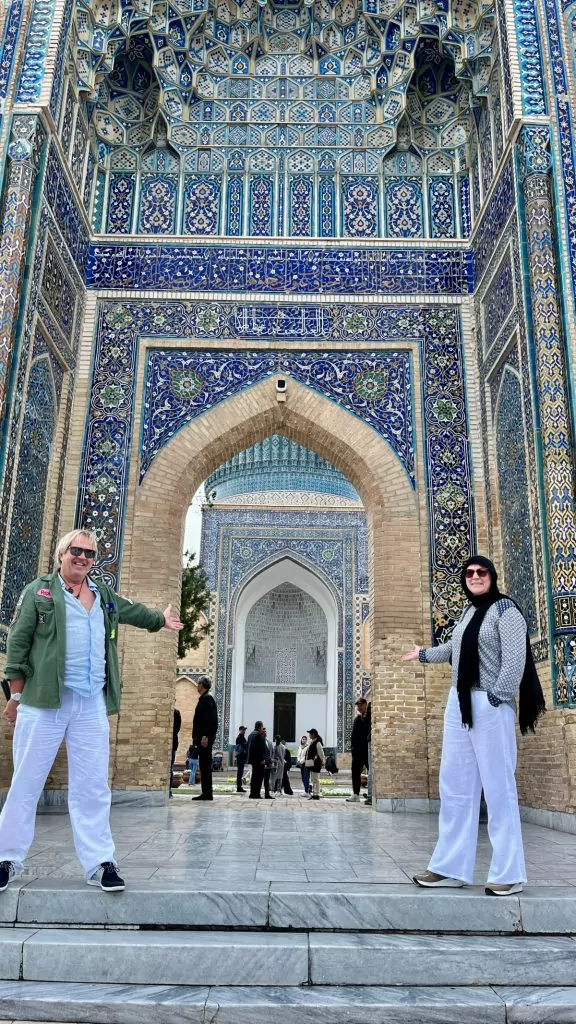
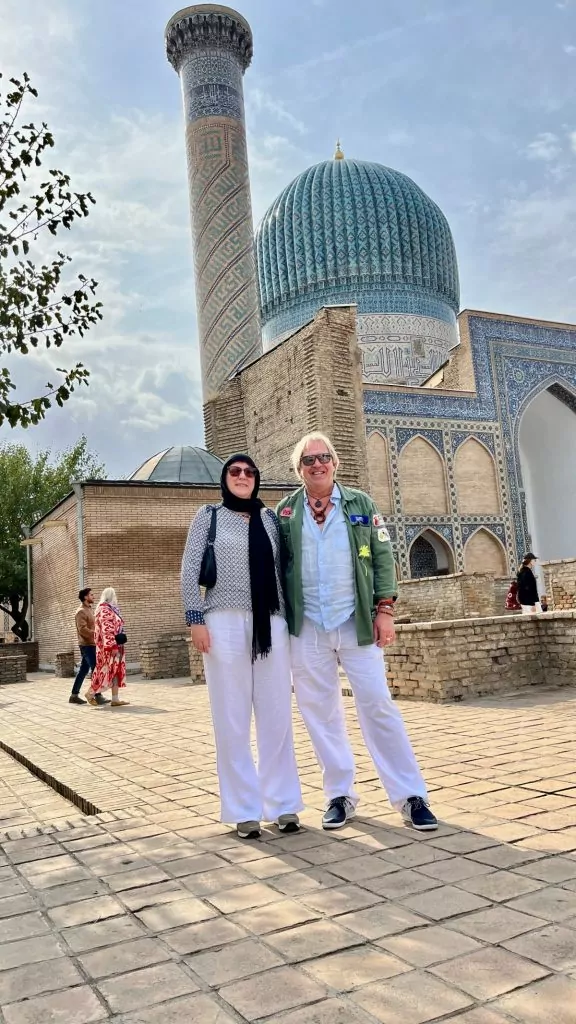
Timur Lenk planned to conquer China, but on the way he died of pneumonia. He was brought back to Samarkand and buried in his mausoleum, also known as Gur-Emir. The mausoleum has an amazing architecture and is today one of the most important sights in Samarkand.
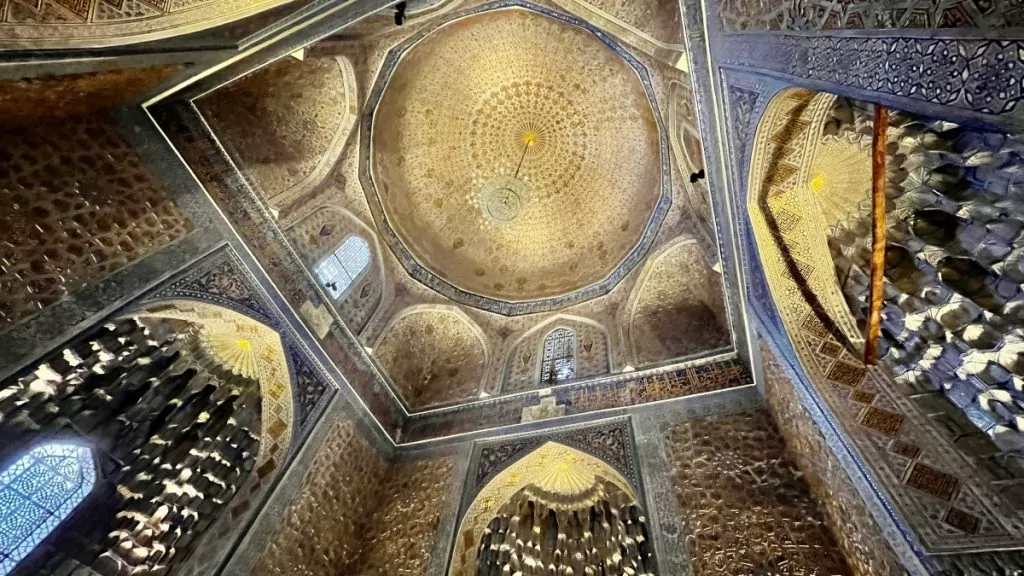
4. Fascinated by the Shakh-i-Zinda complex
Shakh-i-Zinda, meaning 'The Living King', is an area that includes a series of powerful mausoleums and other religious buildings. The complex was built over eight centuries, from the 11th to the 19th century, and includes more than twenty buildings. It includes the mausoleum of the preacher Kusam ibn Abbas, and several of Timur Lenk's relatives are buried here.
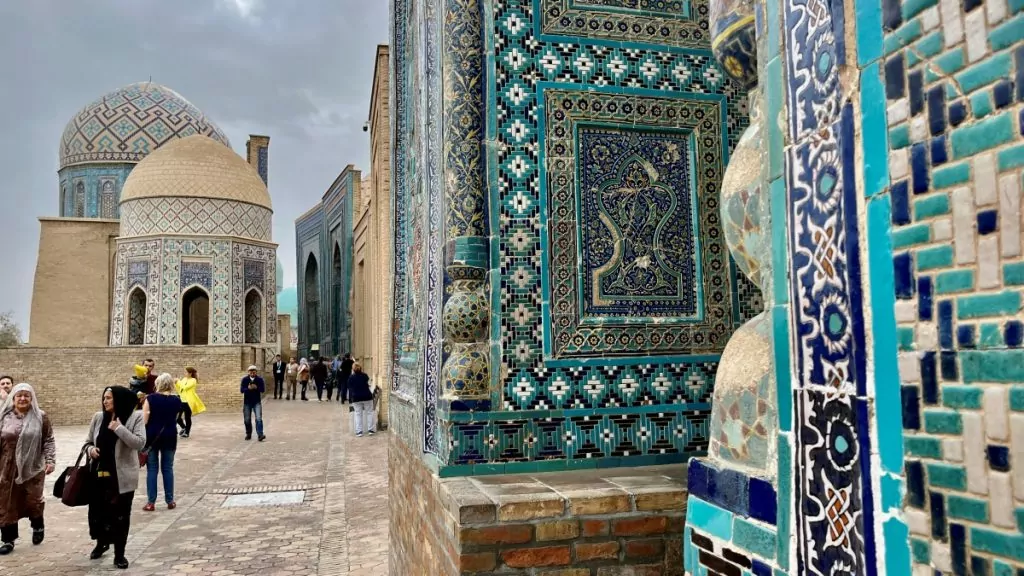
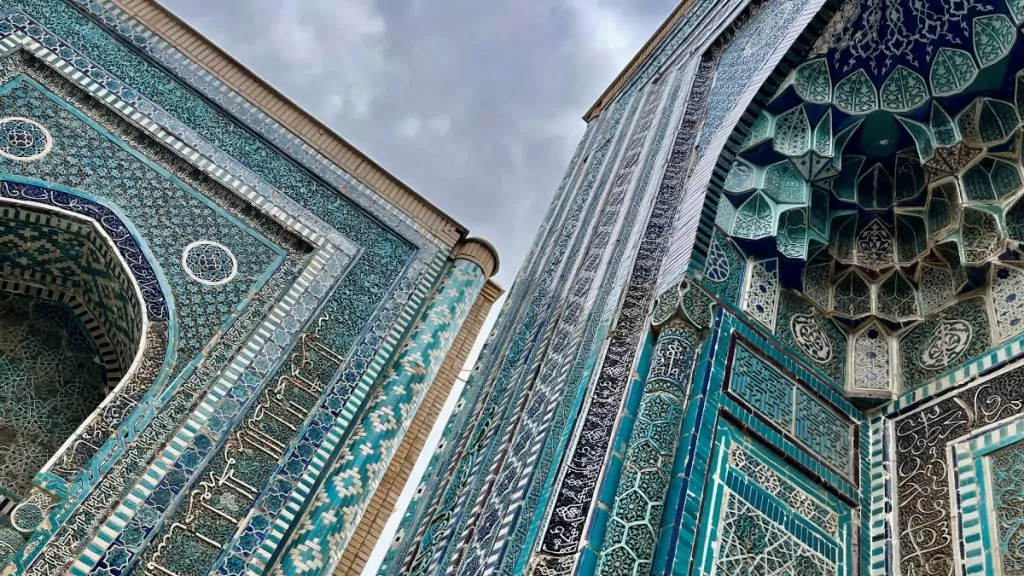
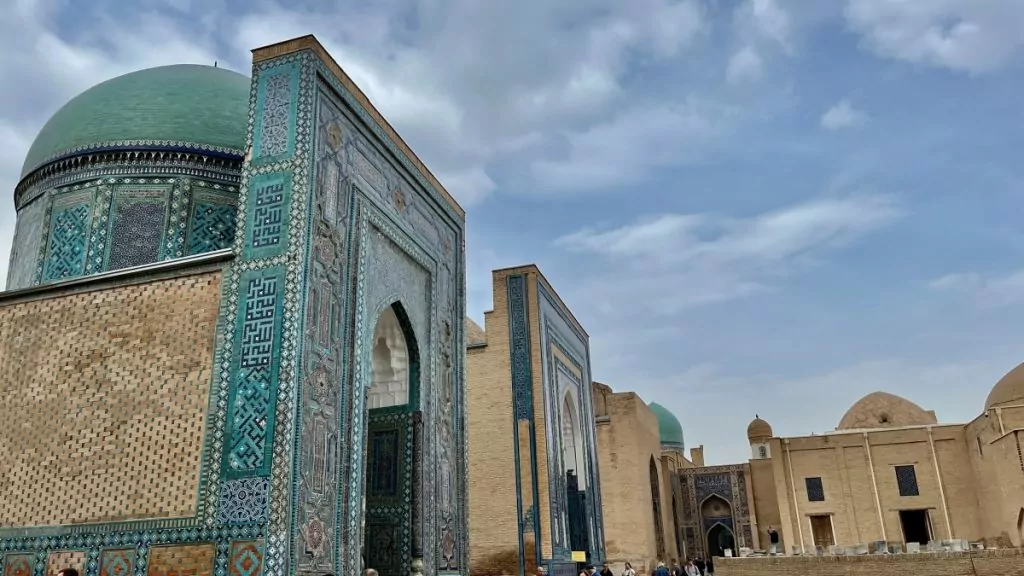
5. Check out the mosque Hazrat Khizr
The Hazrat Khizr Mosque is a beautiful complex located in the highest part of Samarkand, and therefore also offers great views.
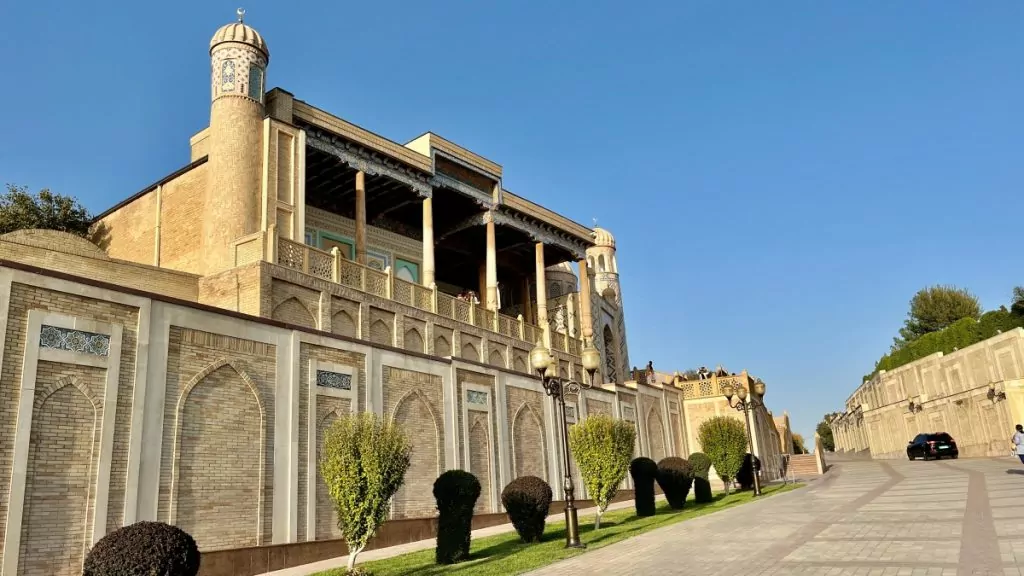
Hazrat Khizr is the first mosque built in Samarkand. It was built in the 7th century and is a UNESCO heritage building.
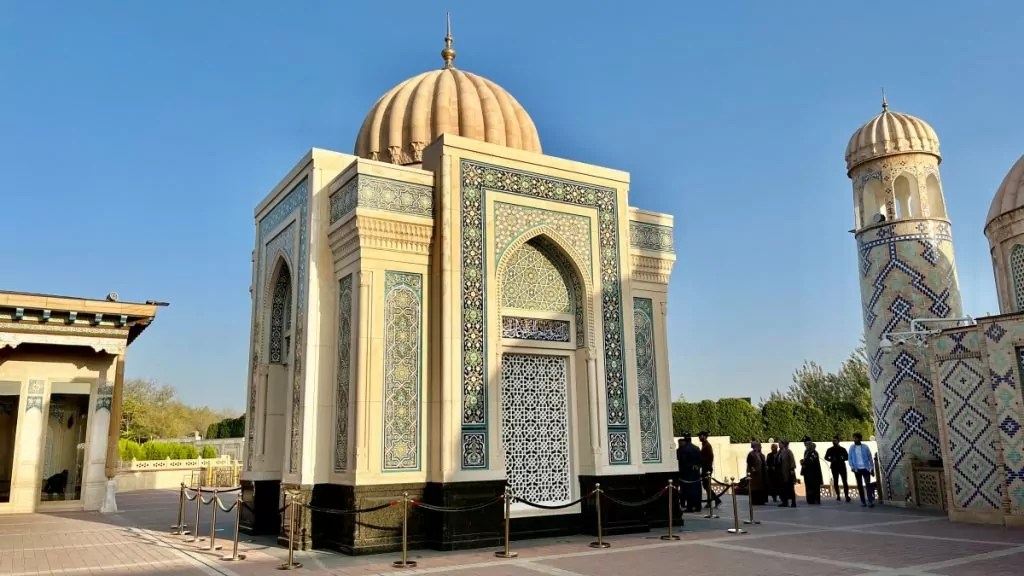
6. learn about history at the Ulug Begs obervatorium
Ulug Beg was born in Persia (now Iran) in 1394, the grandson of Timur Lenk, and died in Samarkand in 1449. He was known as the greatest astronomer of his time and compiled a star catalogue of no less than 1018 stars.
Ulug Beg's observatory was the largest of its time and included a meridian arc with a radius of 40 metres. Today, very little remains of the once three-storey observatory, but it's still an interesting place to visit.
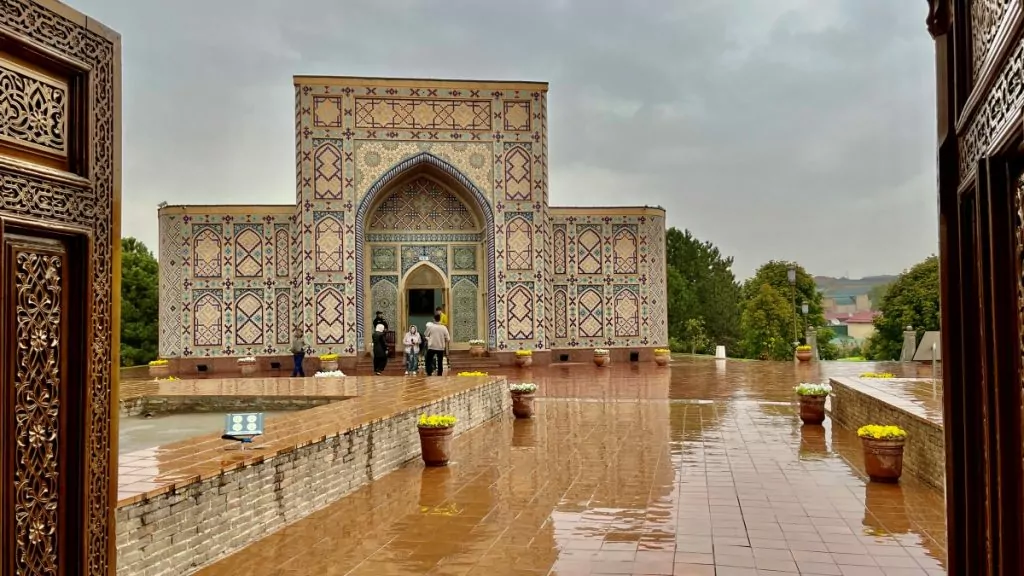
You can look down on the remains of the arc, and there is also a museum that tells the story of the astronomer and gives you an idea of what the observatory and the meridian arc once looked like.
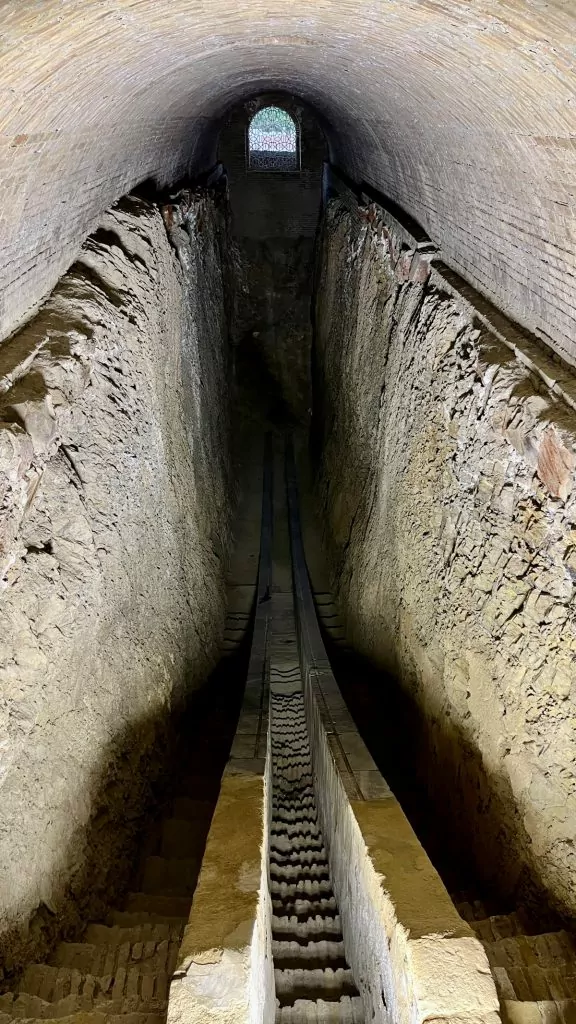
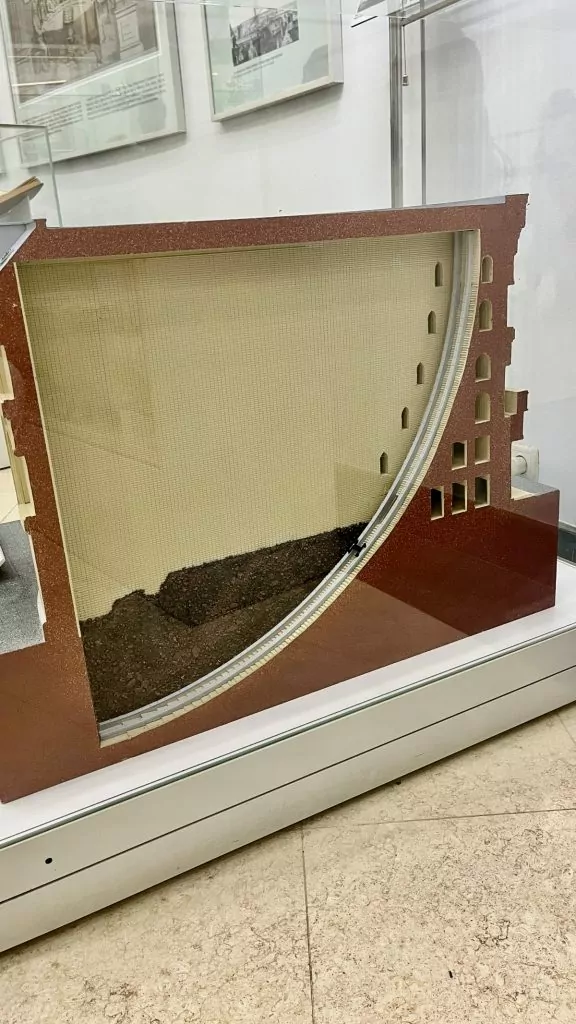
7. Pay a visit to the St Daniel Mausoleum
Depending on the religion, he has different names. Muslims call him Khoja Daniyar, Jews call him Dānīyyēʾl and Christians call him St Daniel. St Daniel's tomb is located on a mountain on the outskirts of Samarkand, where there is also a spring of holy water.
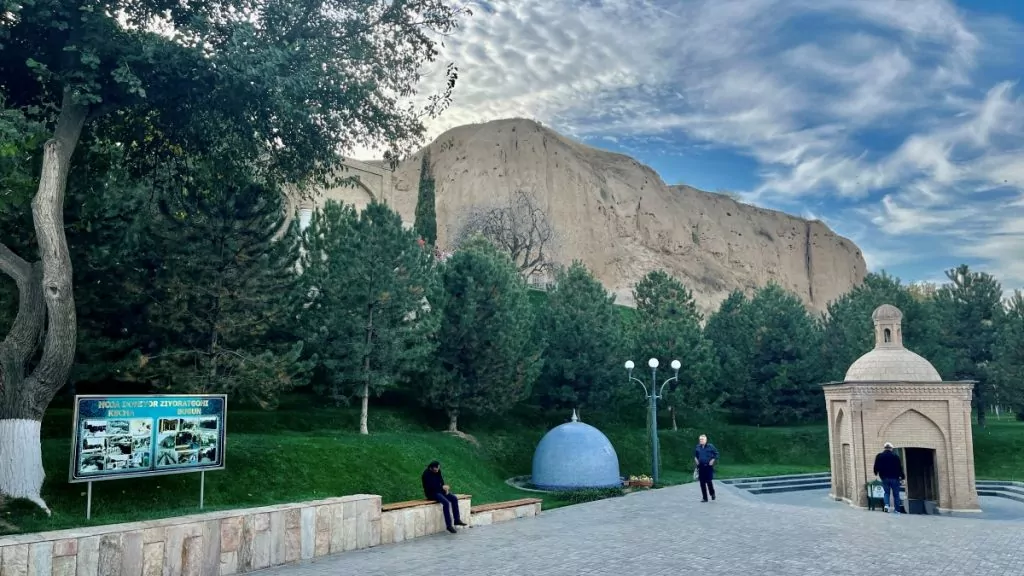
The tomb itself is long. Visitors are welcome to walk round it after taking off their shoes.
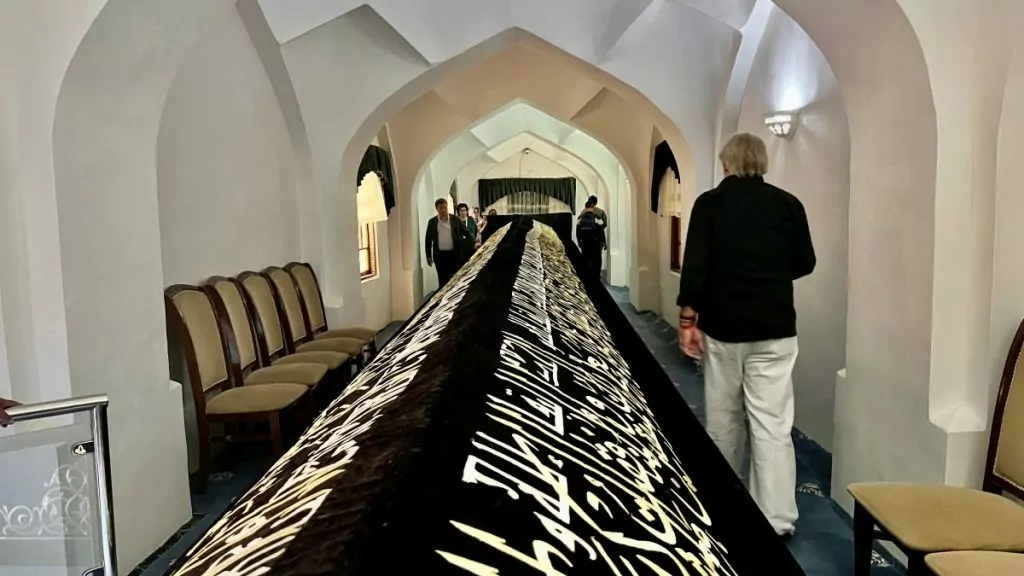
8. Visit Afrasiab Museum and ancient site
The Afrasiab Museum is located at one of the largest archaeological sites in the world, next to the ancient city of Afrasiyab, which was destroyed by the Mongols in the early 13th century. In the museum you can learn about the ancient city, including large wall paintings.
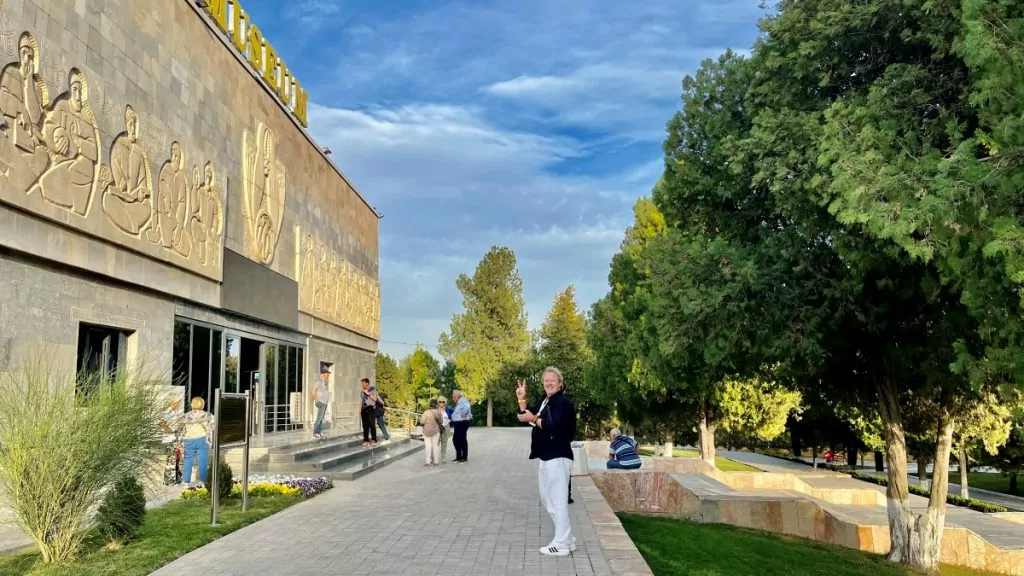
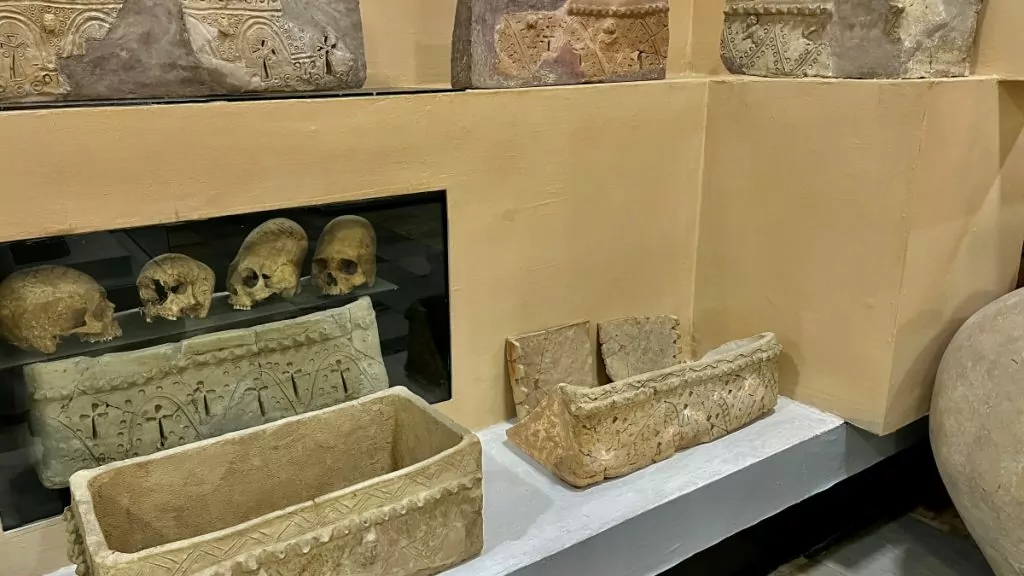
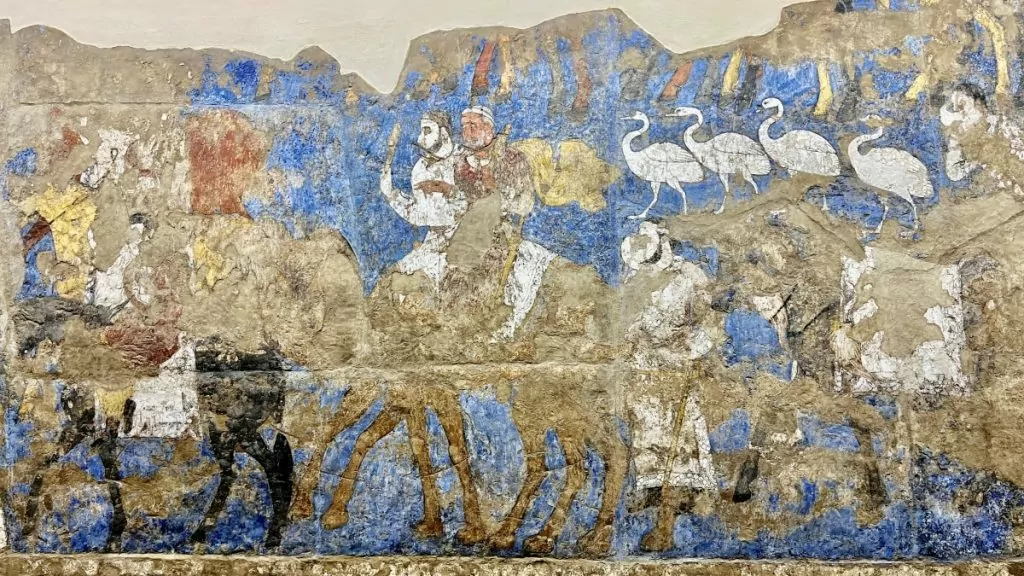
Just outside the museum is the ancient site where the excavations were carried out. Here you are greeted by a special landscape and some informative signs.
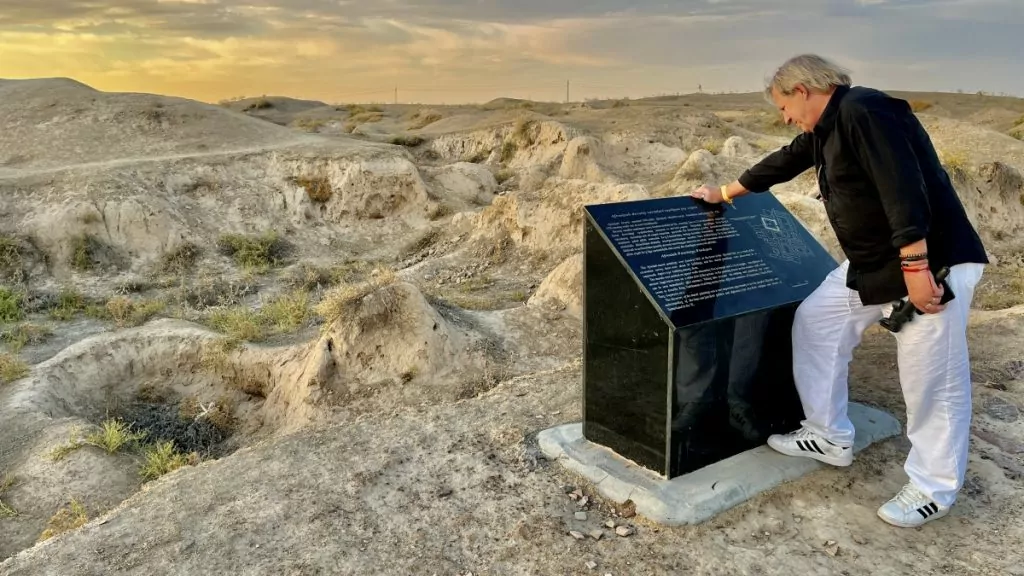
9. peek into St Alexis Cathedral
Uzbekistan is a predominantly Muslim country, so of course there are mainly mosques here. However, there is also a Christian minority, and we found it interesting to visit a church. We checked out St Alexis Cathedral, which was built in 1912 and is an orthodox church. What was most different, compared to the churches in our part of the world, was that there are no pews.
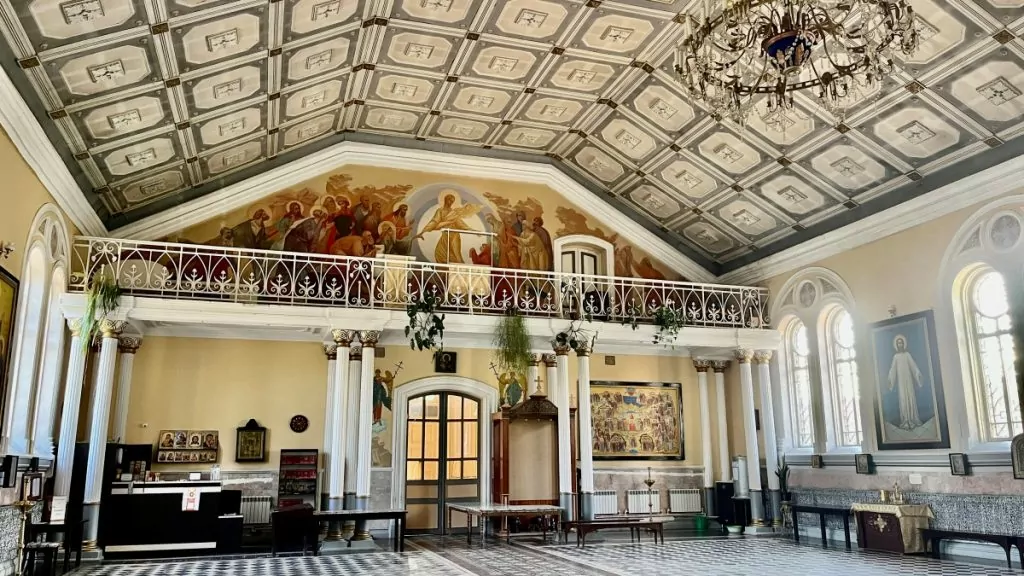
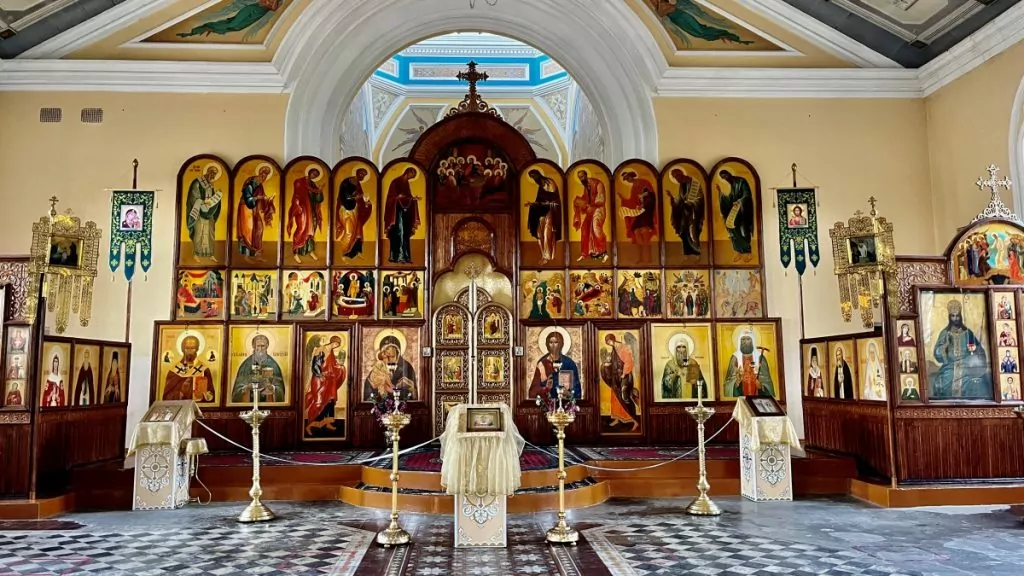
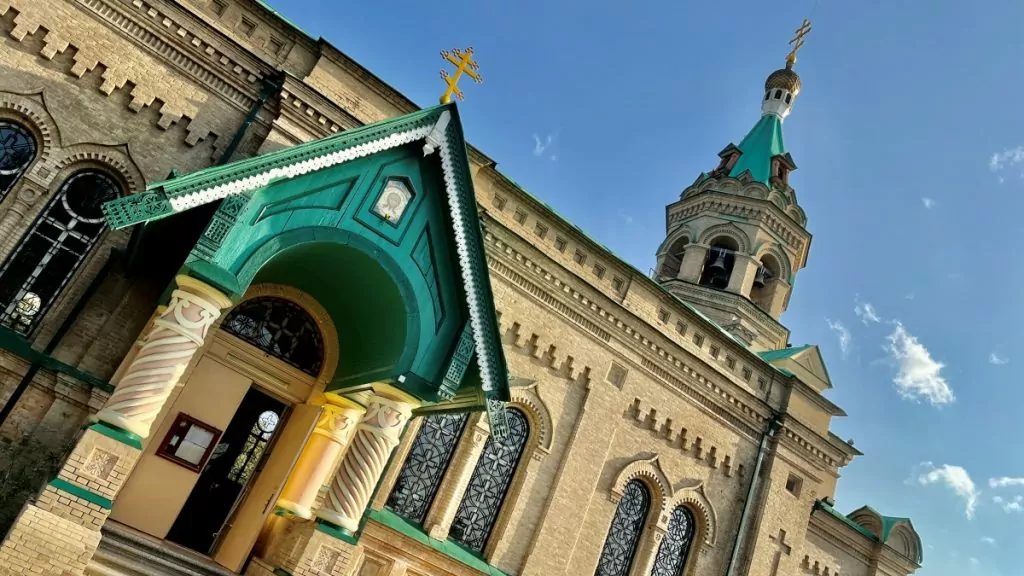
10. Discover the Silk Road Samarkand Touristic Centre
In Samarkand there is a newly built district called Silk Road Samarkand Touristic Centre. This is a part of the city where there are eight large newly built hotels, a holiday village, conference facilities and a small old-style 'city' called Eternal City.
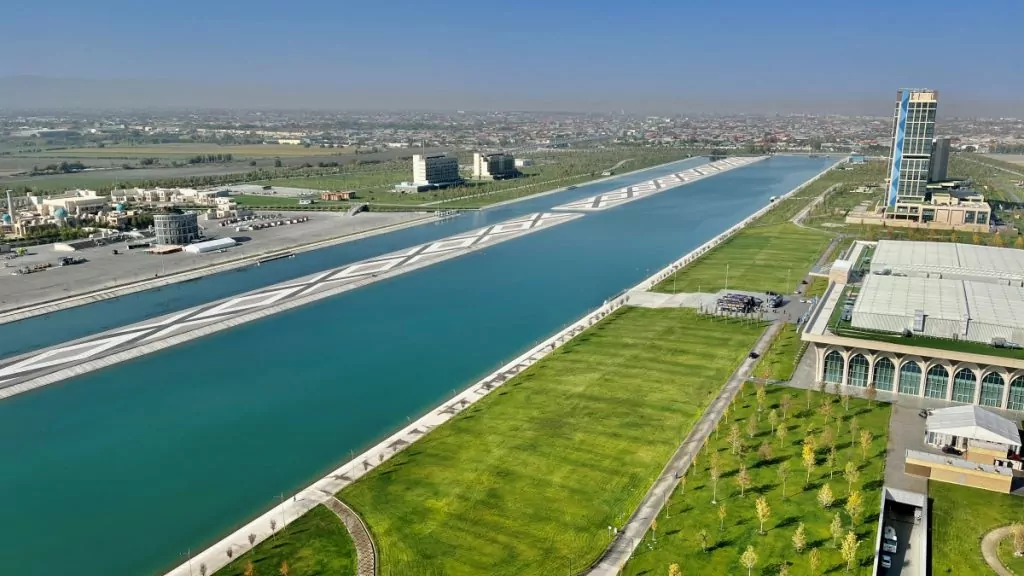
As well as staying in a hotel here, and taking part in the Conference 25 UNWTO , we also went up to the rooftop bar at Minyoun Hotel. And yes, there was coffee and a cake in that hotel too ...

11. Strolling in the Eternal City
Perhaps the most special place in the Silk Road Samarkand Touristic Centre is the small 'town' that has been named Eternal City. This is a newly built "tourist town" built in a traditional style.

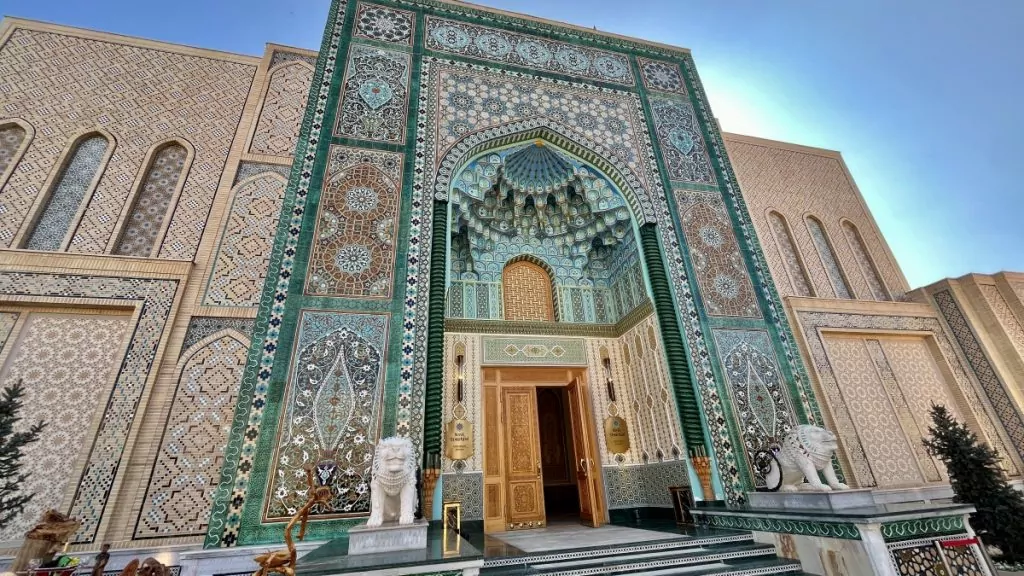
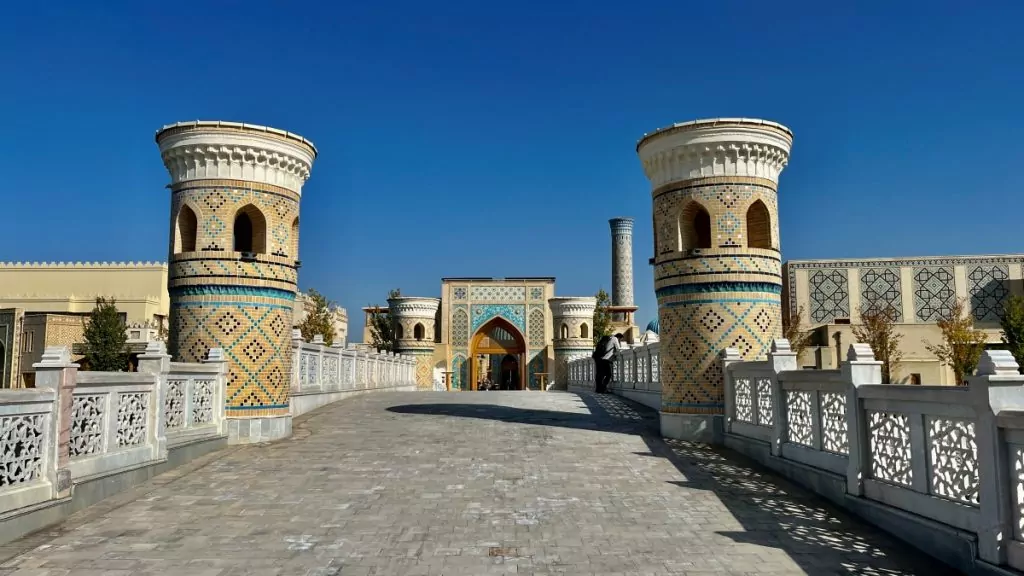
Even though Eternal City is a newly built place, we liked this place. Every wall is beautiful and there is plenty of amazing craftsmanship.
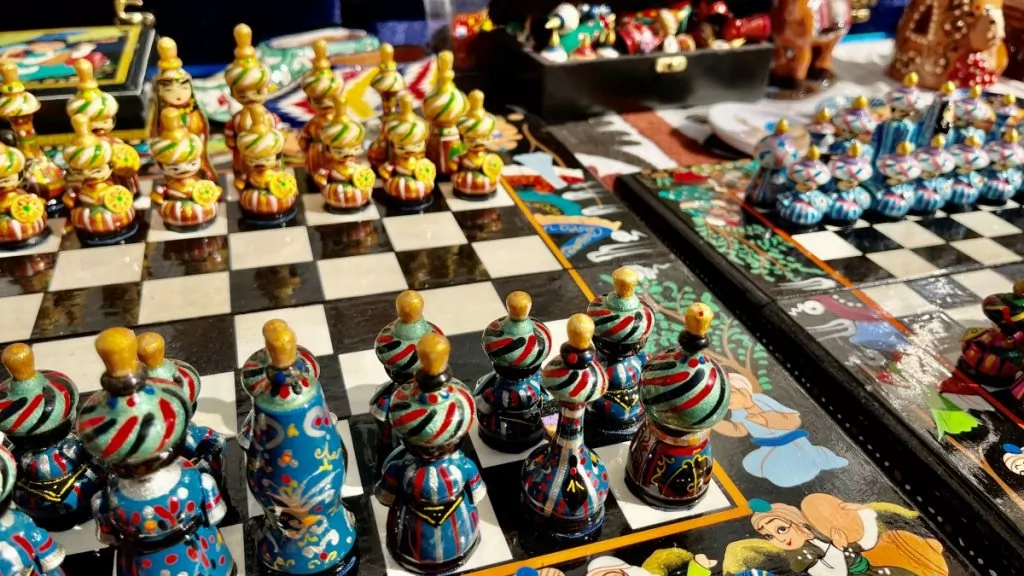
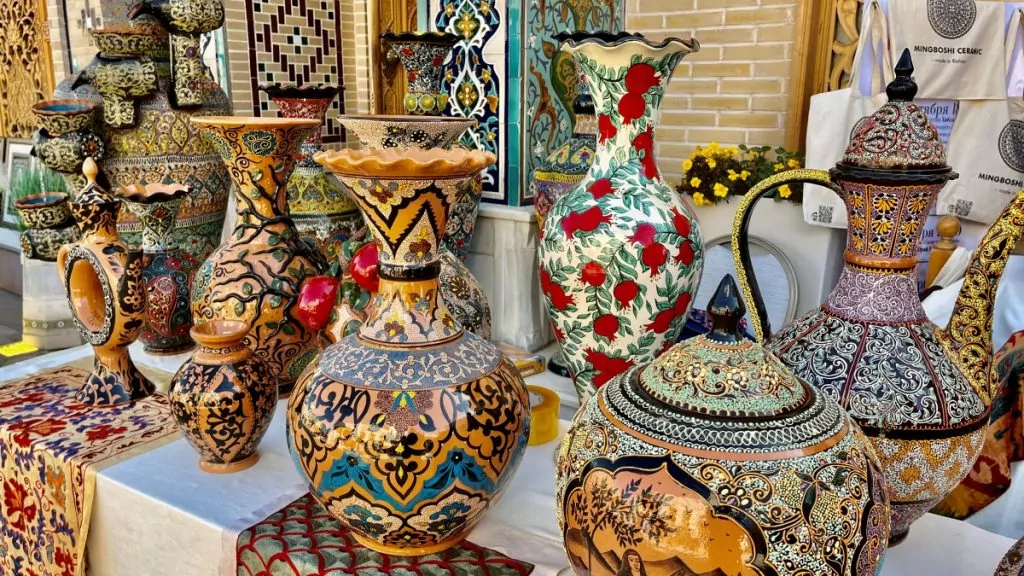
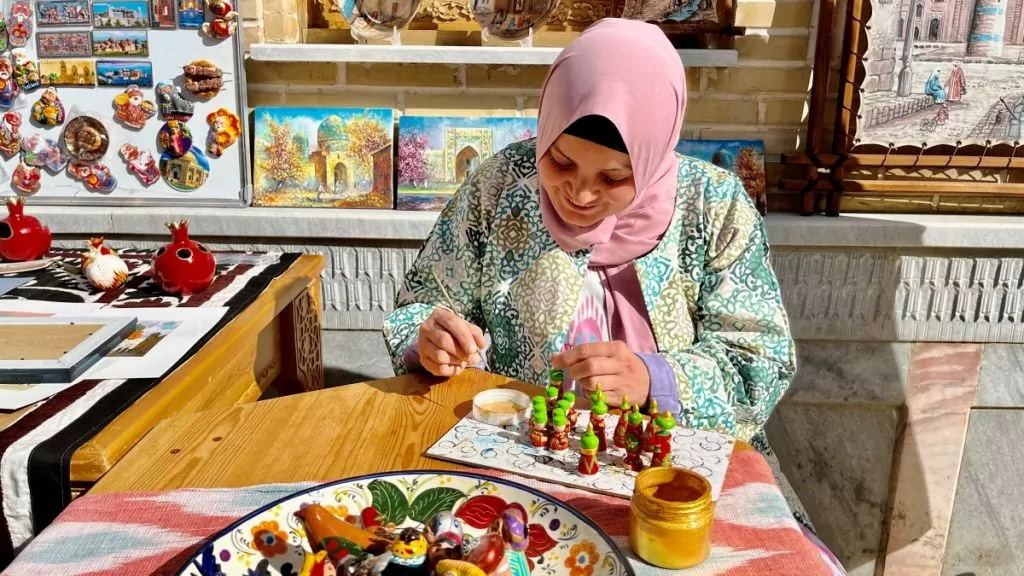
12. See a show in the Eternal City
The Eternal City has a newly built revolving amphitheatre, reminiscent of the observatory once built by astronomer Ulug Beg. Various concerts and festivals are organised here, and we attended a fantastic event here, from singing and dancing to fireworks and drone shows.

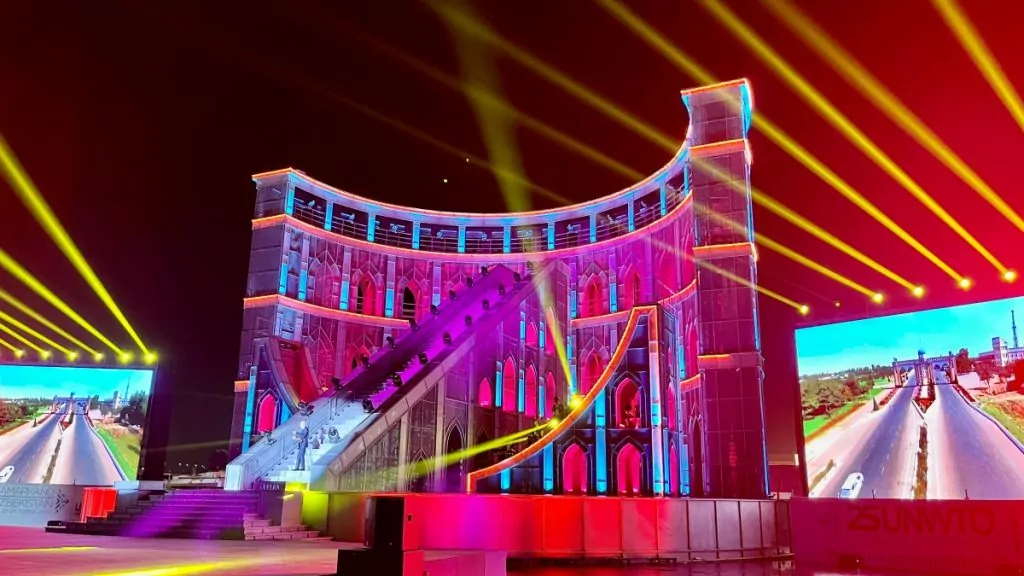
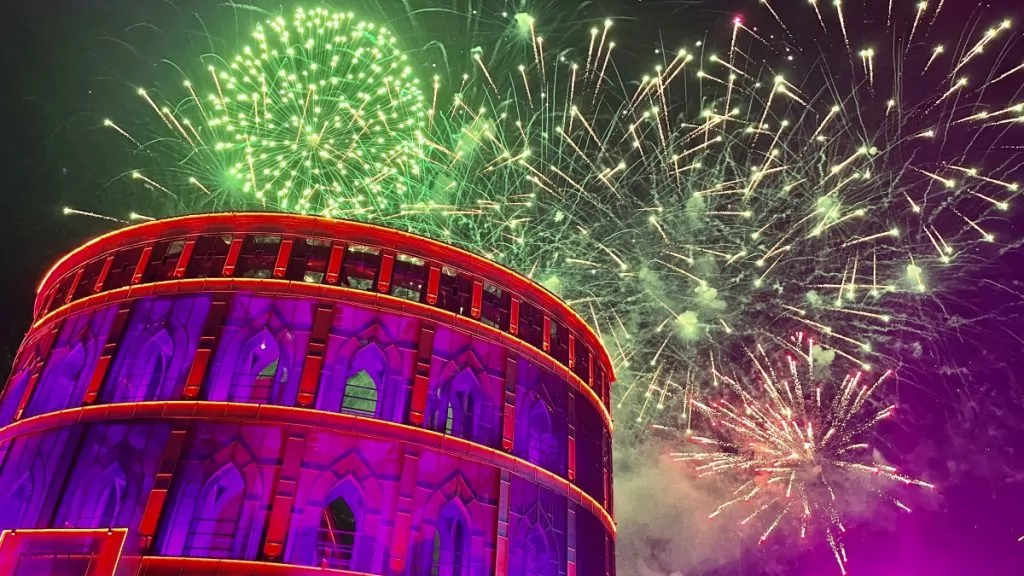
13. Shop for a silk carpet at Samarkand Bukhara Silk Carpets
A visit to the Samarkand Bukhara Silk Carpets carpet factory is very interesting. Here you can learn more about both the silk and the solid craftsmanship, and watch the workers tie the big beautiful carpets. Of course, you can also buy a silk carpet if you wish, or perhaps a shawl.
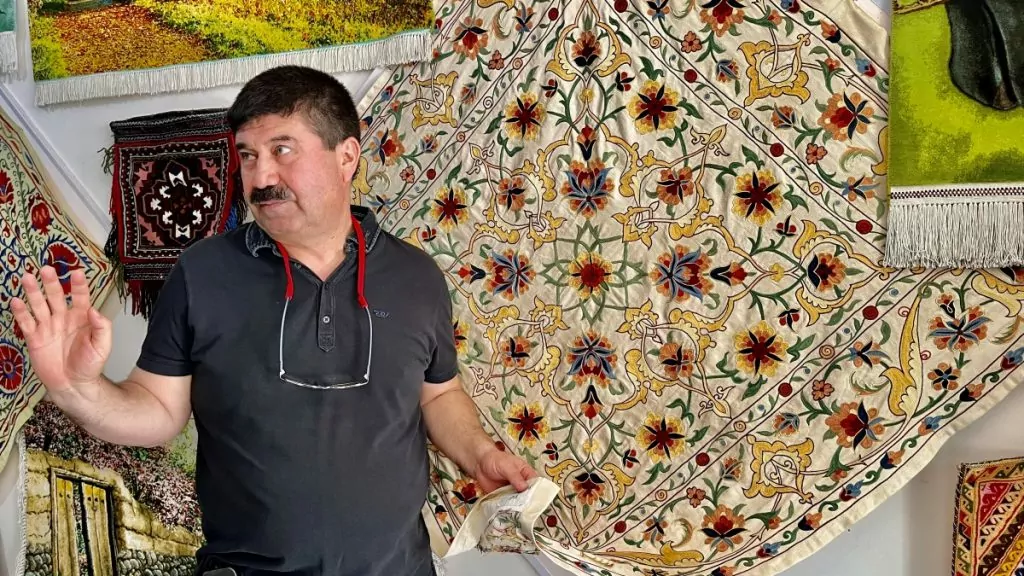
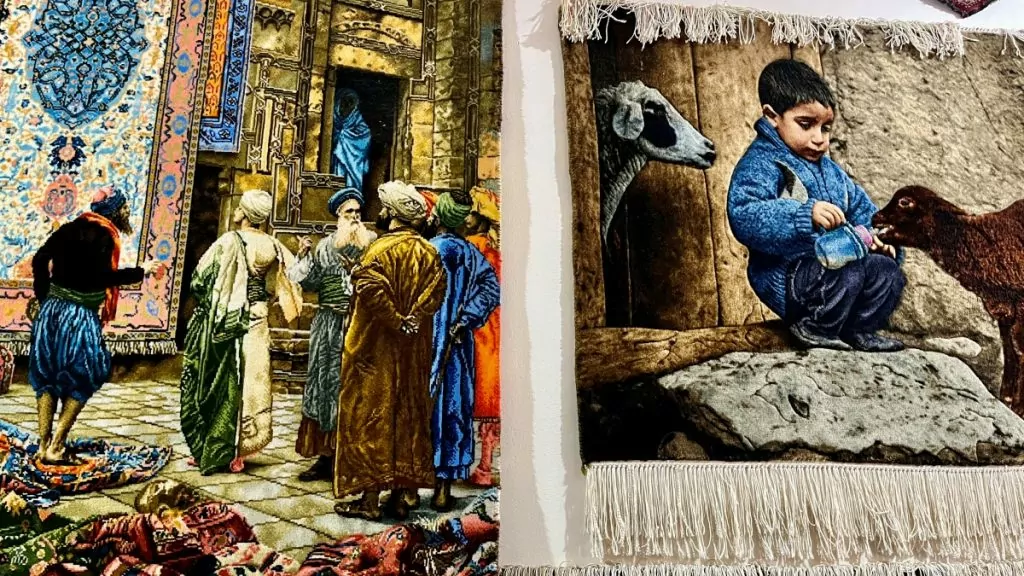
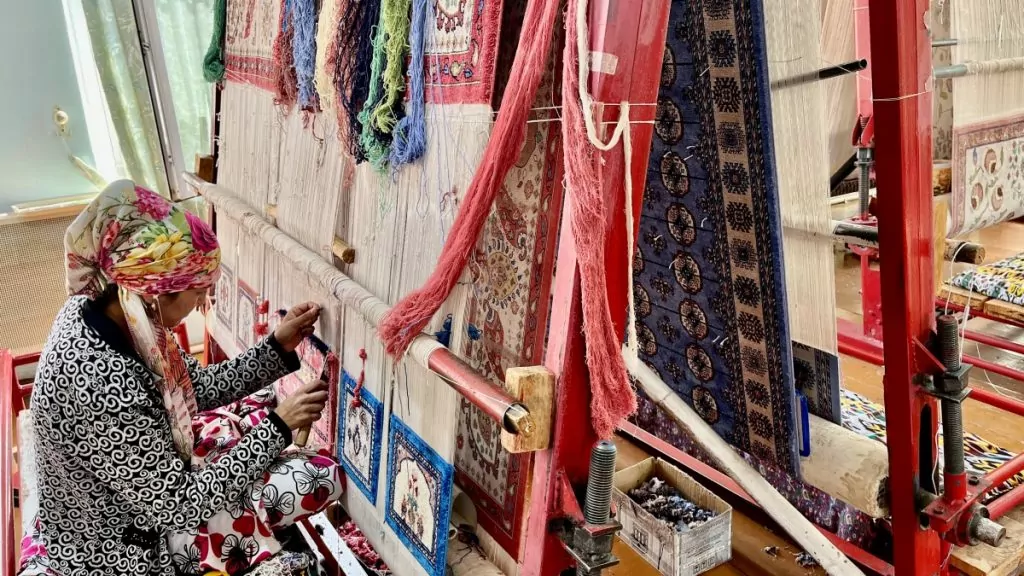
14. Visit the tourist village of Konigil with hand paper mill
Just outside of Samarkand is the tourist village of Konigil, known for its craft traditions and beautiful scenery of river and shady trees.
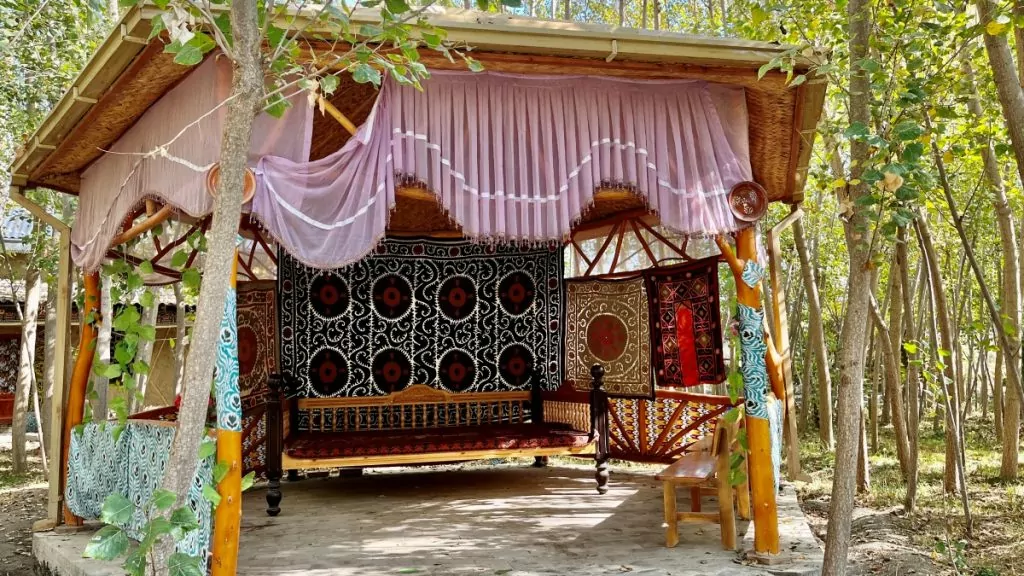
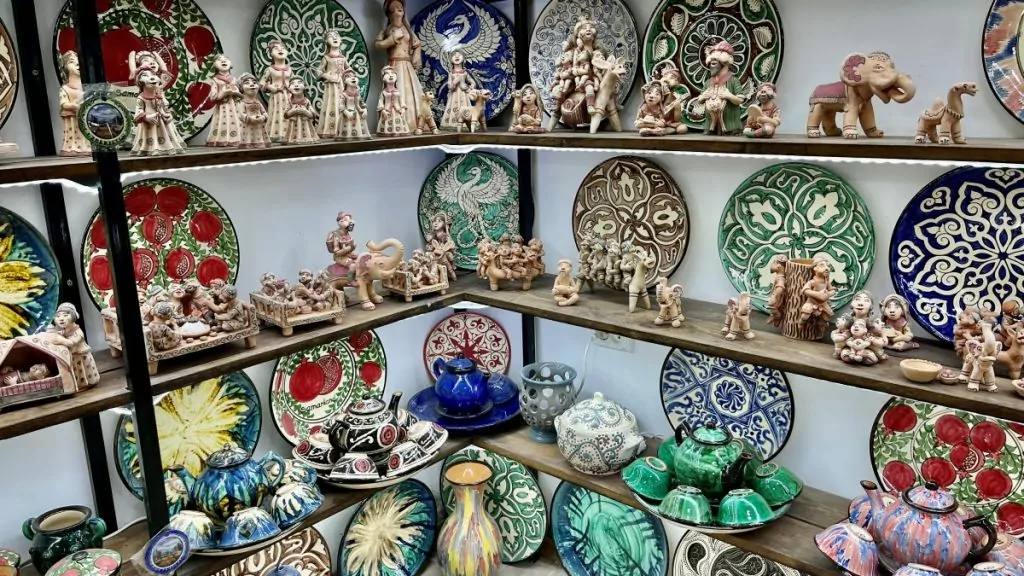
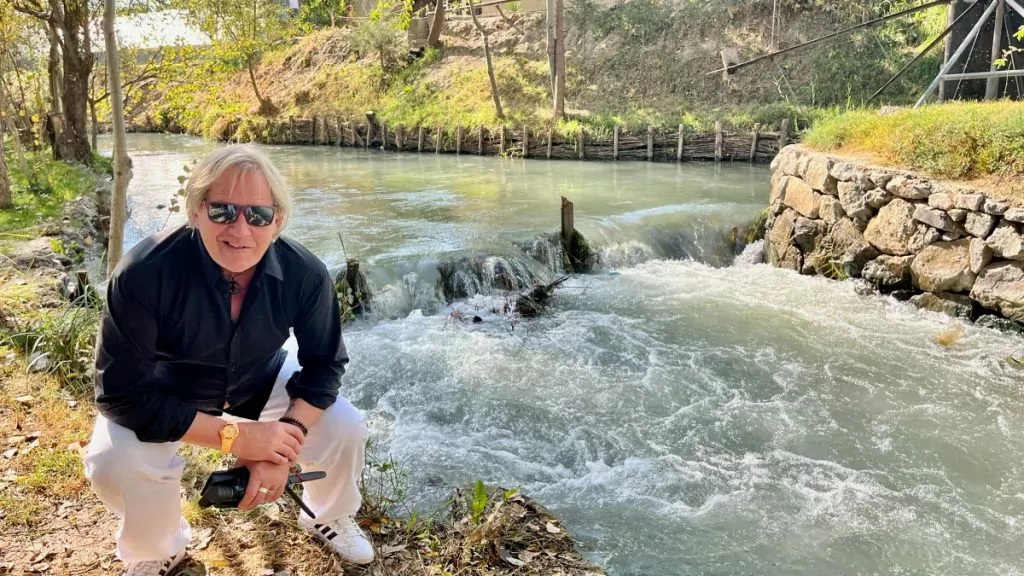
The main attraction here is a hand paper mill, founded by the craftsman brothers Muhktarov. Thanks to this, you can now see how paper was produced in the past, using manual labour and natural raw materials.
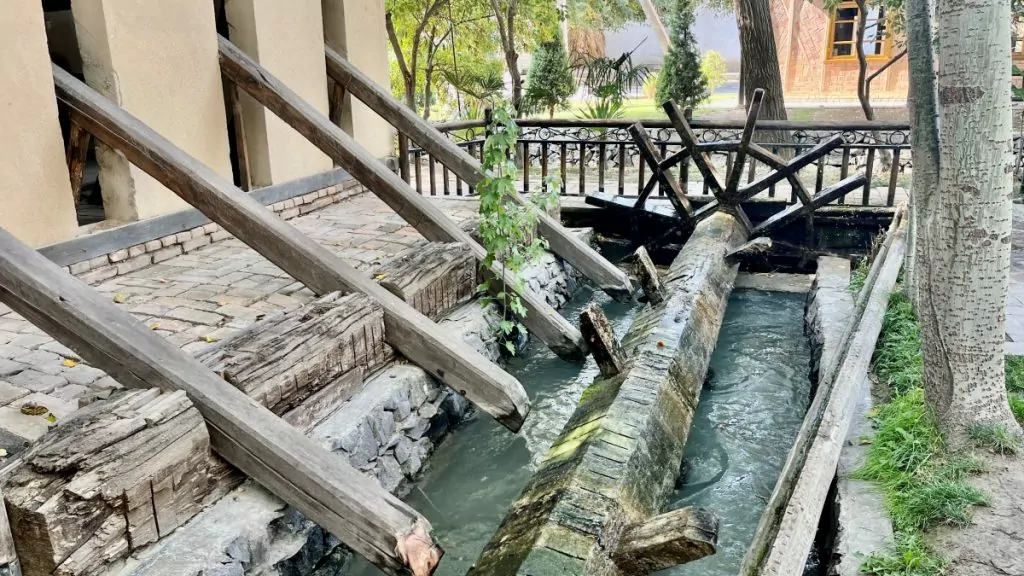
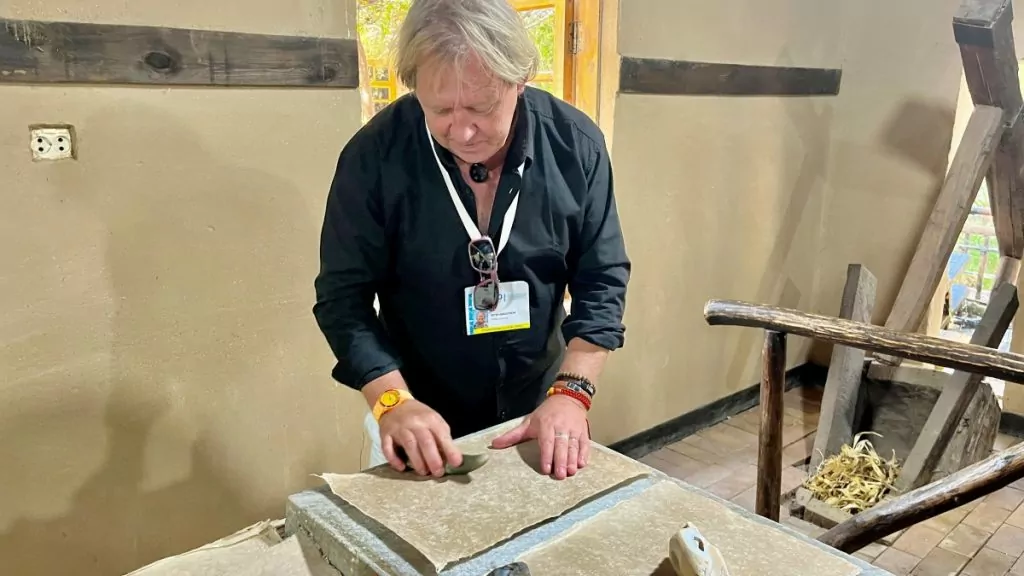
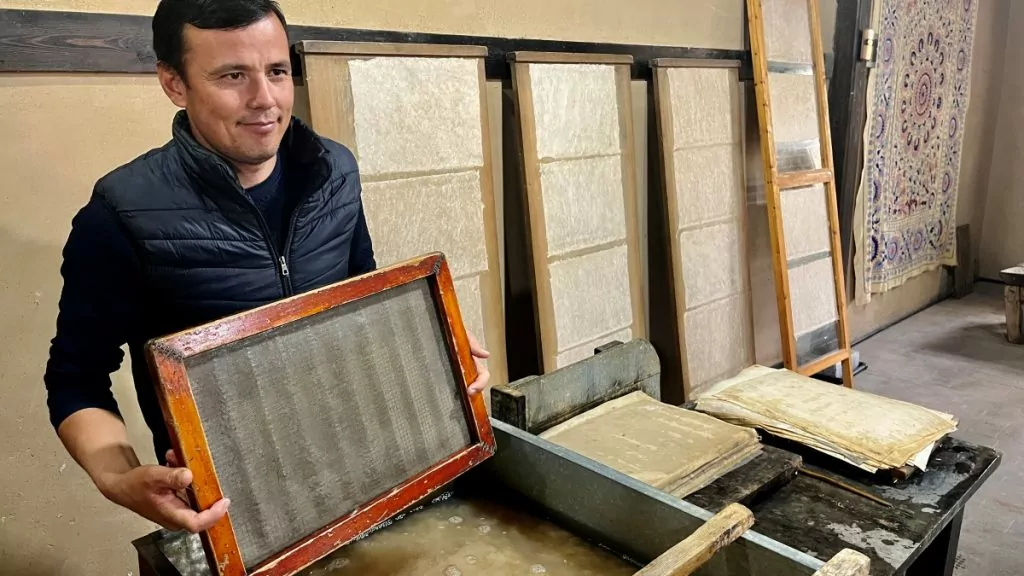
15. Tasting Uzbek food
One thing you won't want to miss doing in Samarkand is enjoying Uzbek food. You can take the opportunity to try Uzbekistan's national dish plov, which you can do, for example, at Plov Tsentr. Other dishes you may want to try are samsa (stuffed bread dumplings), dumplings and various soups. Some restaurants you can visit are Oasis Garden and restaurant Maniresa.
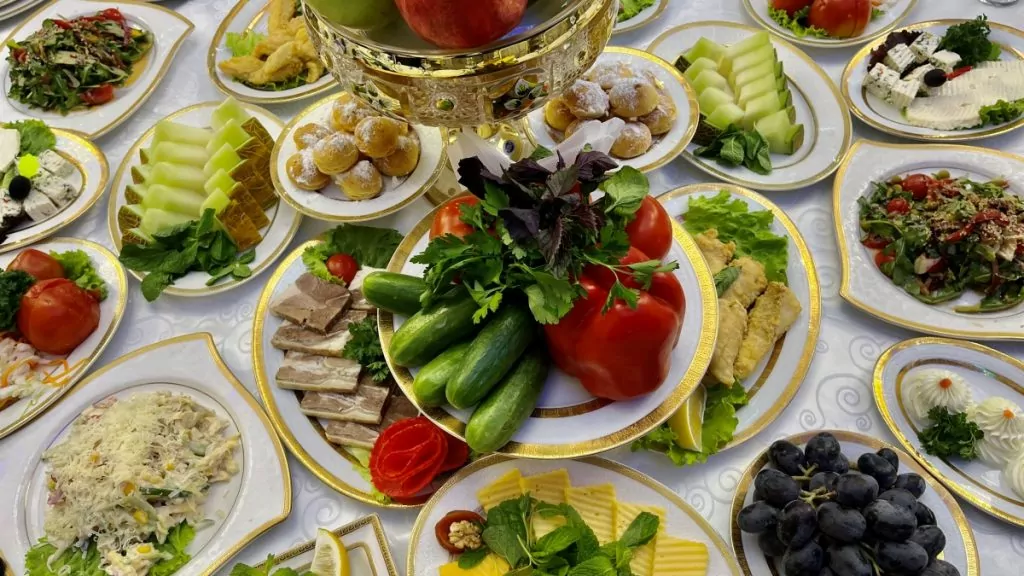
16. Try Uzbek wine
Although Uzbekistan is a Muslim country, and although some abstain from alcohol altogether, there is also a tendency to use alcohol as a substitute. Wine and beer culture in Uzbekistan. There are several vineyards in the country, and in Samarkand you can drink local wine in the restaurants. If you want to go wine tasting, you can visit the House Museum of Filatov, where there is both a small wine museum and the possibility of wine tasting.
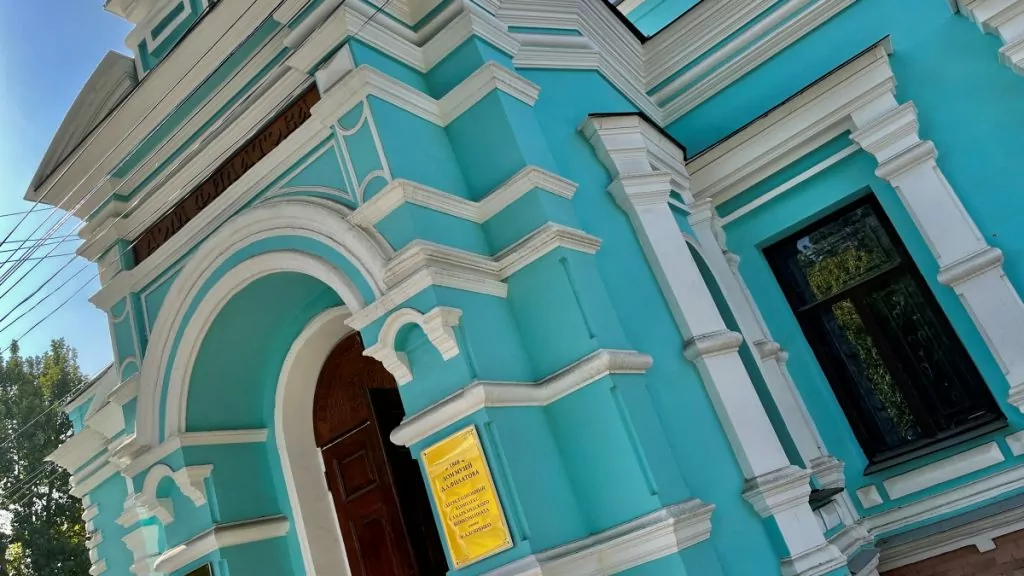
Instead, we had the opportunity to visit a very old wine cellar nearby, which is not open to the public but only welcomes selected guests. The former owner was forced to abandon and leave this wine cellar, and it was then found much later. Fascinatingly, the port wines, which are sweeter, are still drinkable. We got to try a port wine from 1968!
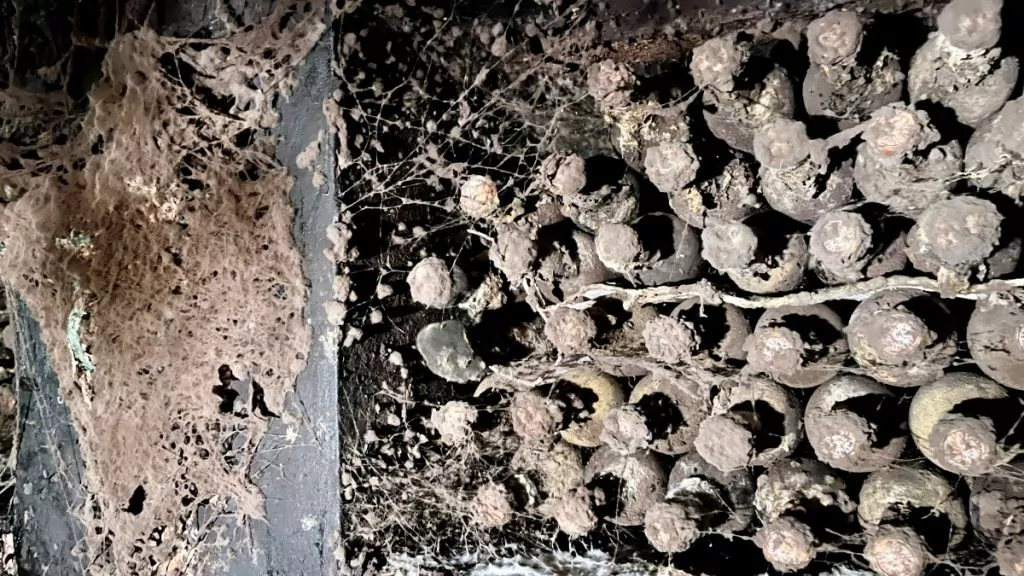
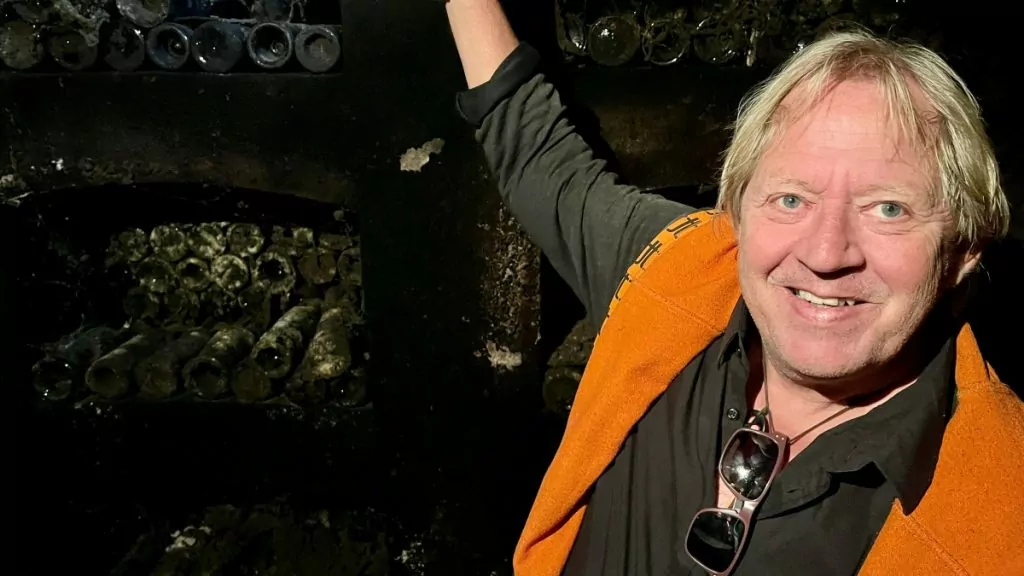
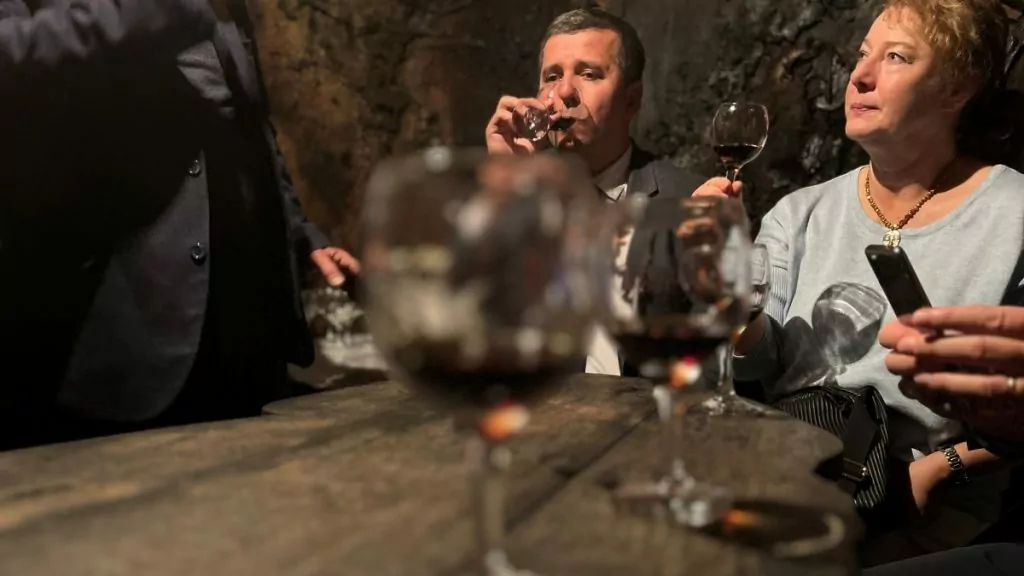
17. shopping at Siab Bazaar
Another thing you won't want to miss doing in Samarkand is bargaining at a market. You can visit Siab Bazaar where you can find everything from spices, nuts and dried fruit to ceramics, shawls, jewellery and traditional clothing in beautiful colours.
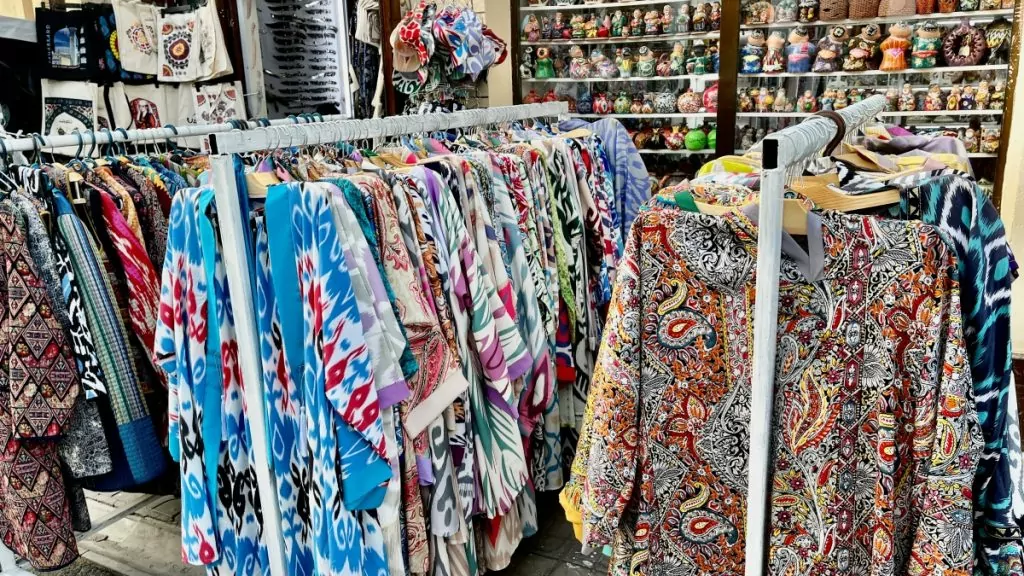
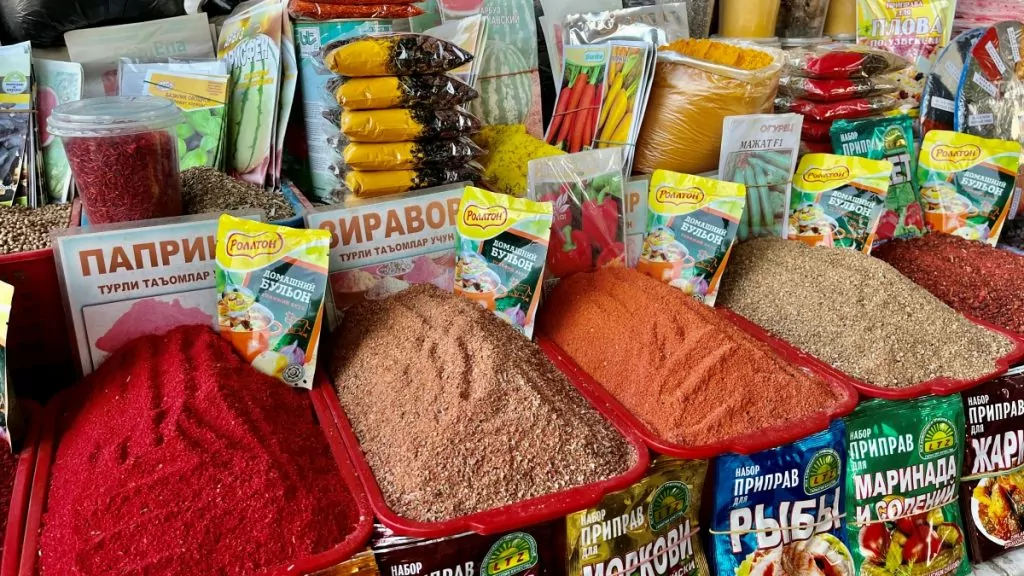
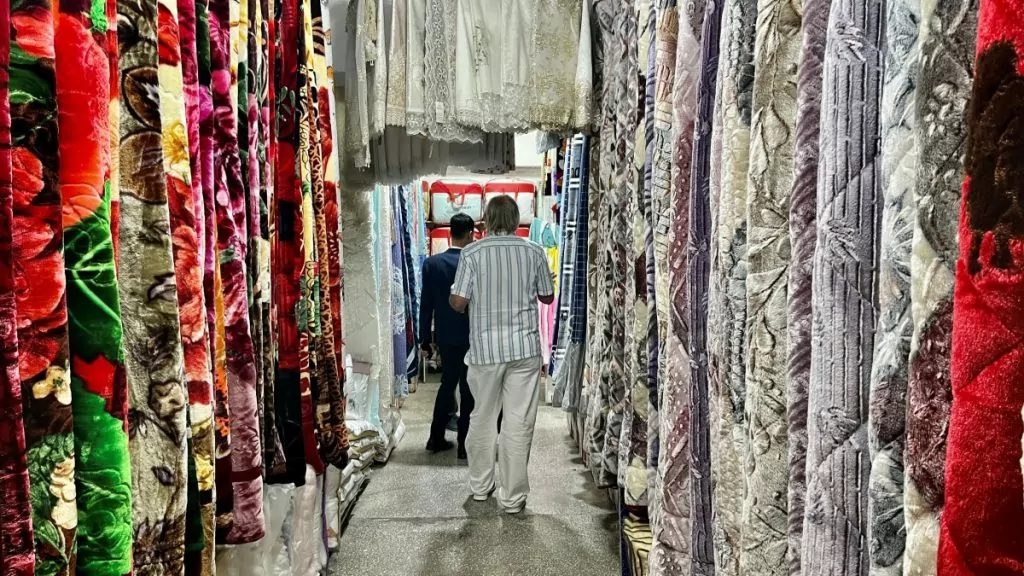
18. Take an excursion to Urgut.
Urgut is both a city and a region, located southeast of Samarkand. Here you can experience nature with mountains and you can also visit the ancient garden Chor-Chinor, which includes thousand-year-old trees so big you can step into them.
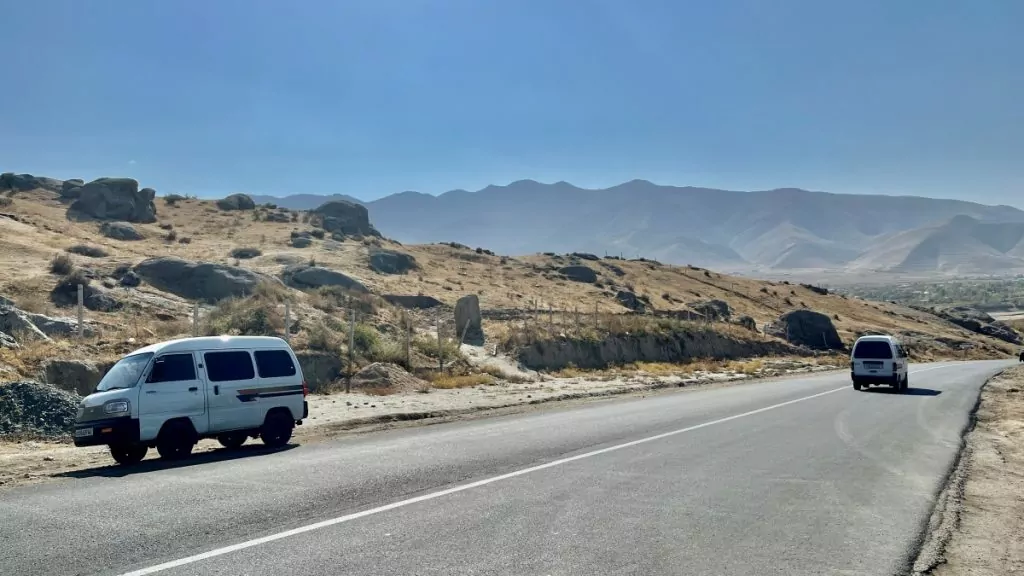
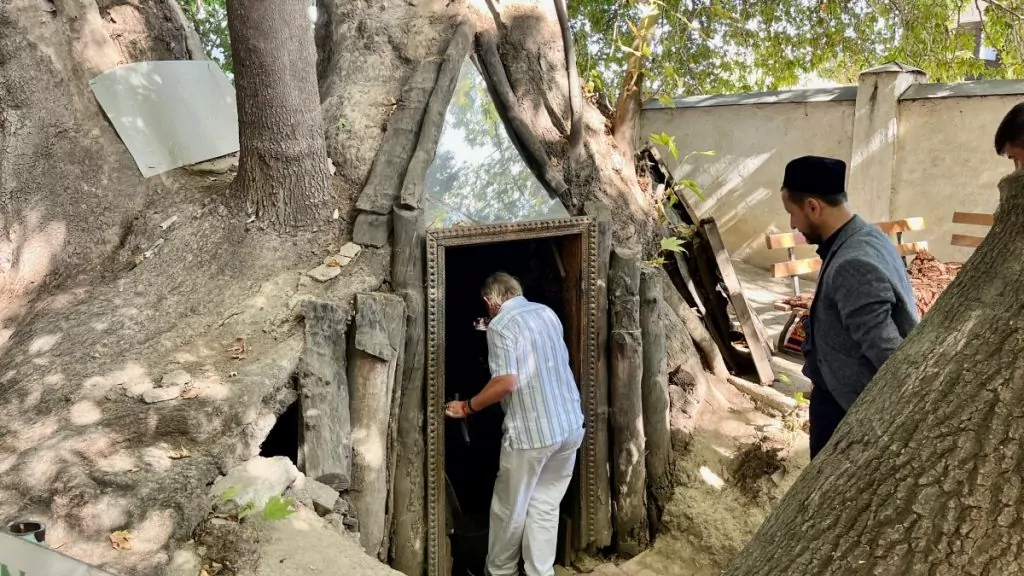
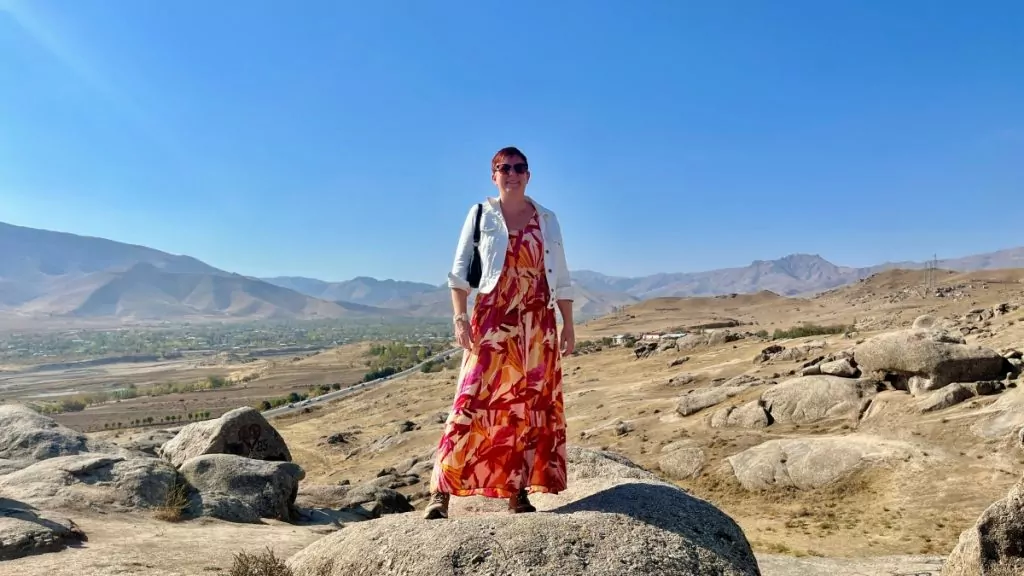
More to do in Samarkand
Want even more tips for things to see and do in Samarkand? Here are some more suggestions.
- Afrasiab Ancient Settlement is a site with ruins of the ancient settlement of Afrasiab.
- Bibi-Khanum is a monumental mosque in Samarkand, considered a masterpiece of the Islamic world, dating from the 15th century.
- Mausoleum of Imam al-Bukhari is a mausoleum where Imam Bokhari is buried.
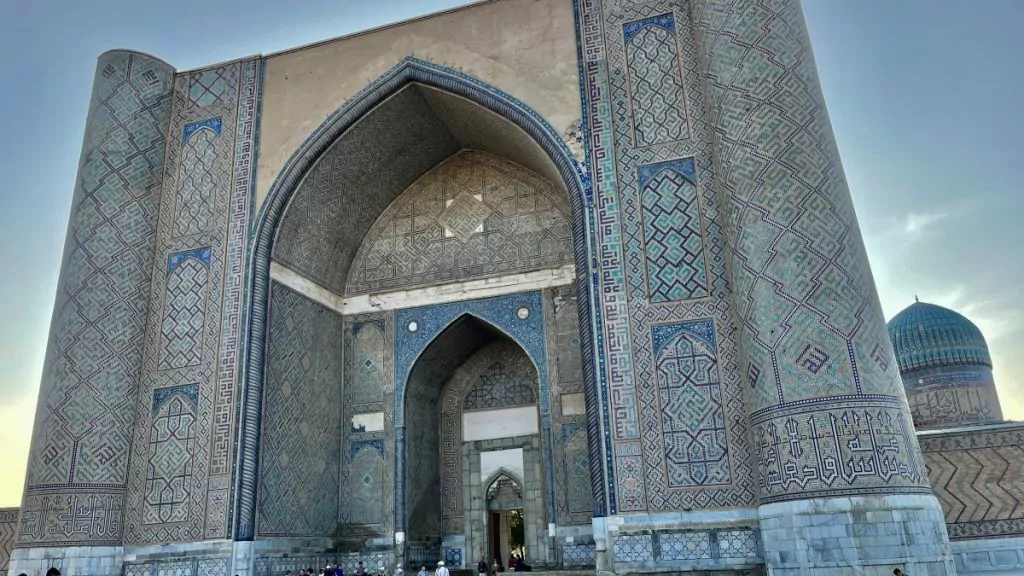
Where to stay in Samarkand?
There are of course many different hotels to choose from in Samarkand. We stayed in the newly built district called Silk Road Samarkand Tourist Centre, and here we stayed at the hotel Bactria. It is a very modern and comfortable hotel, with a bar and a nice buffet breakfast.

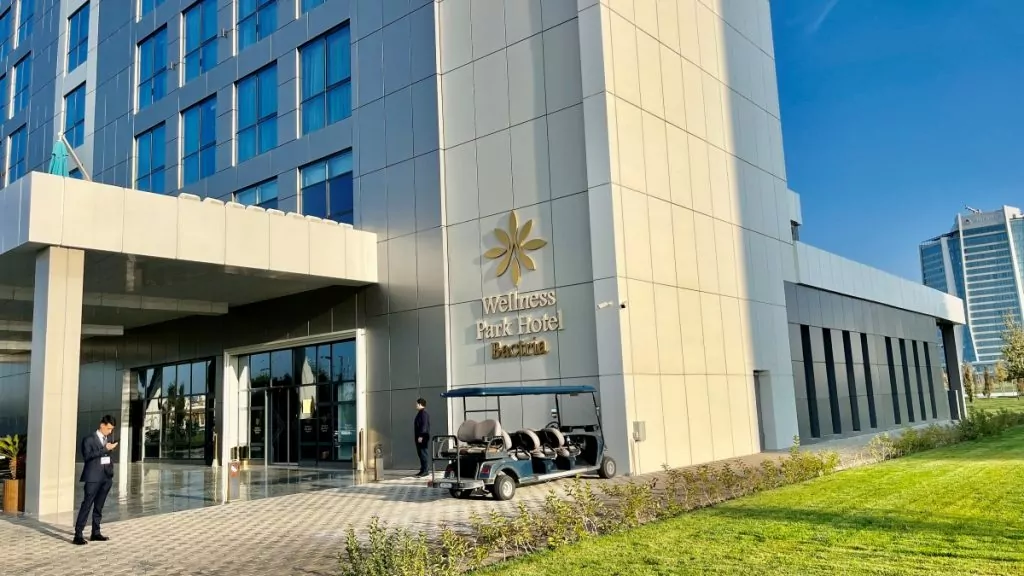
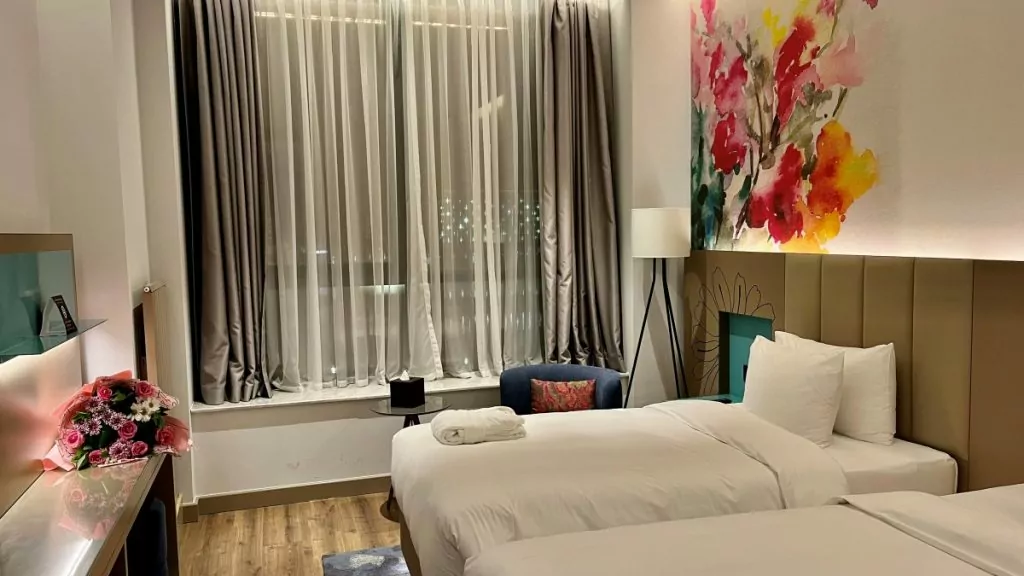
More to see and do in the neighbourhood
Do you have the time and opportunity to see more of Uzbekistan? Some of the most popular places to visit, in addition to Samarkand, include Bukhara, Chiva and the capital Tashkent. Please also read our guest writer's report Uzbekistan - a journey along the Silk Road. For example, you can travel between cities by train. Uzbekistan has modern high-speed trains, making trains an excellent means of transport.

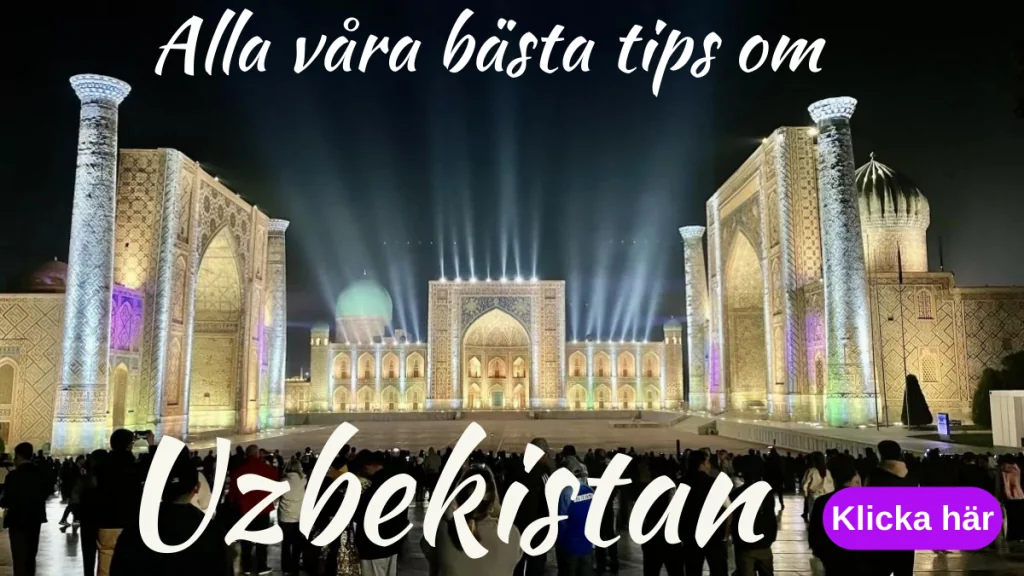
More tips for things to do in Samarkand?
Have you visited this mythical place in Uzbekistan? If so, what are your top tips on what to see and do in Samarkand?
Facts about Samarkand in Uzbekistan
- Country: Uzbekistan
- Location: The city of Samarkand is the capital of Samarkand province, in eastern Uzbekistan.
- Population: More than 509 000 inhabitants (2014)
Good to know about Samarkand
- Language: Tajik and Uzbek. In addition, many people speak Russian. English can be spoken mainly by younger people and people in the tourism sector.
- Time difference: Uzbekistan is 4 hours ahead of Sweden
- Currency: Uzbek as (USZ)
- Religion: The main religion is Islam.
- Upholstery: When visiting religious sites (mosques and cemeteries), people should dress respectfully, which means that women should wear clothes that cover their shoulders and knees and cover their hair with a scarf. Men should wear long trousers. In other places, dress is free, but women usually also wear clothes that cover their shoulders and knees. Shawls are not required outside religious sites.
Travelling to Samarkand
- Flight: You can fly to Uzbekistan, for example via Riga. It is also possible to fly via Istanbul, Budapest or Munich.
- Organised trips: There are several companies that arrange organised trips to Uzbekistan, including Iventus.
History in Samarkand
- Early history: Archaeological excavations reveal 40,000-year-old evidence of human activity.
- 8th century BC: The city of Samarkand was founded around this time.
- Antiquity: Known in ancient times as Marakanda, the city was an important link for trade between Persia and Central Asia.
- 329 BC: The city was captured and destroyed by Alexander the Great.
- 7th century: The city was taken by Arabs, and then by Persians.
- 13th century: The city was the capital of Persia at the beginning of this century.
- 1221: The city was destroyed by the Mongols under Genghis Khan.
- 14th century: Samarkand became the capital of Timur Lenk's empire.
- 1785: Samarkand became part of the Bukhara Emirate, an Uzbek empire that existed until 1920.
- 1868: The city became Russian.
- 1924: Samarkand became the capital of the Uzbek Soviet Republic.
- 1930: The city was replaced as the capital by Tashkent.
- 2001: Samarkand was inscribed on the UNESCO World Heritage List.


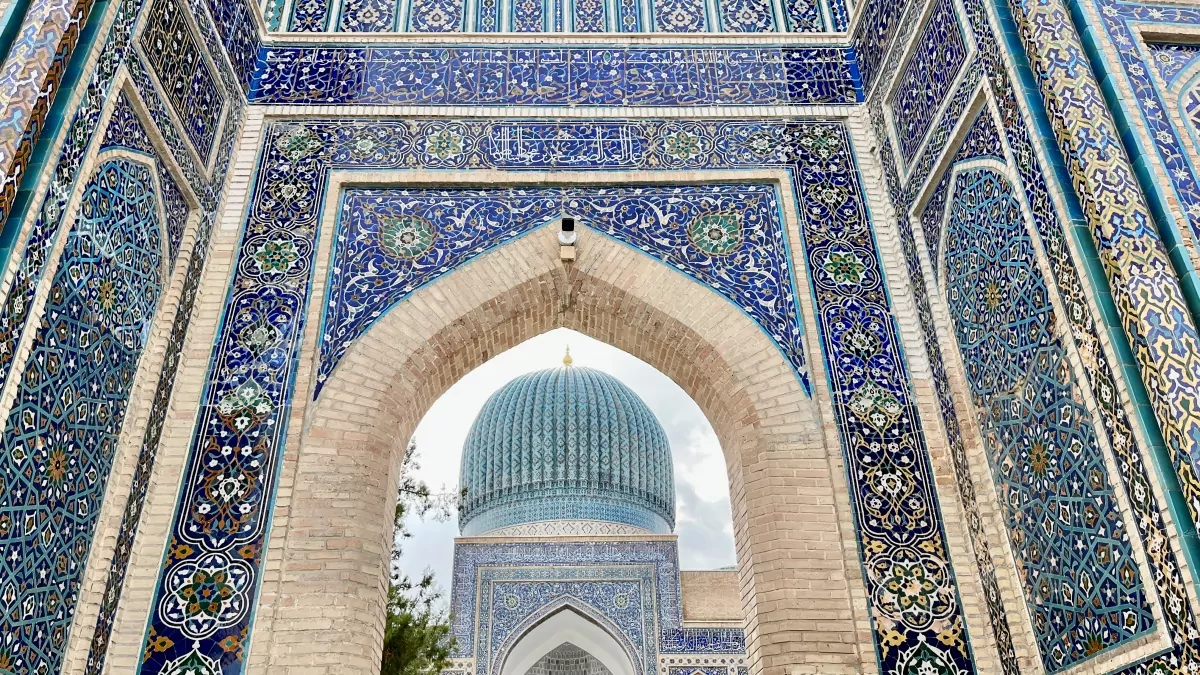






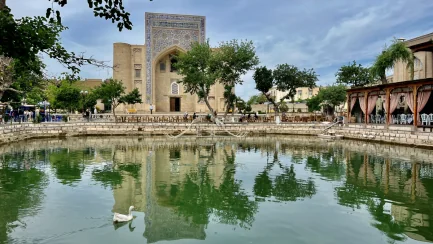
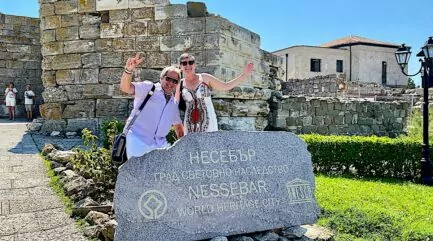
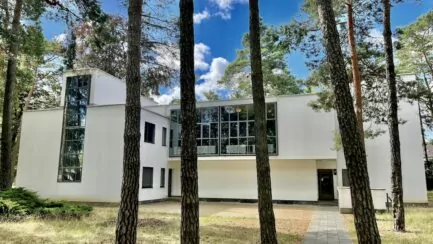
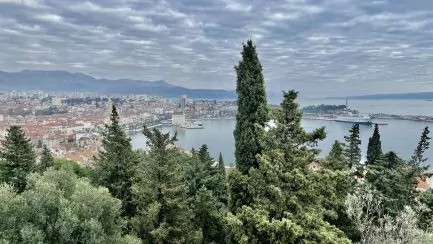
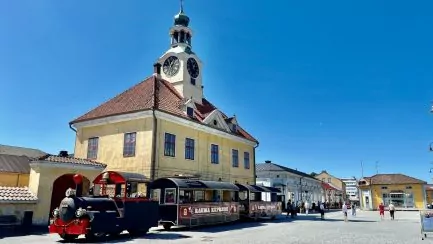
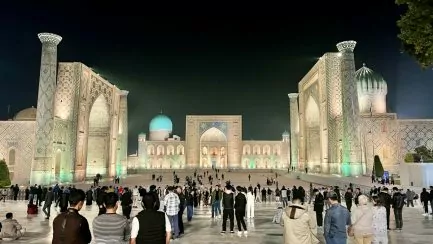



Lena - good for the soul says:
No, I haven't visited Samarkand. Heard about it of course, but hardly reflected on where it is even located. But gosh how exciting and different it seems.
Have a nice Sunday!
Hug Lena
12 November 2023 - 12:12
Helena says:
It was really an exciting and interesting trip!!! And thank you the same!!! Hugs
12 November 2023 - 17:05
BP says:
Samarkand must be the most beautiful city in the world. The pictures you posted are simply "breathtaking". As a former Soviet state, I never thought it would be so fresh and modern. And an ultra-modern model express train I hadn't expected either. I can only thank and bow for the fact that I have been given a free ride - again:-)
12 November 2023 - 16:39
Helena says:
12 November 2023 - 17:06